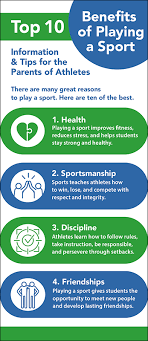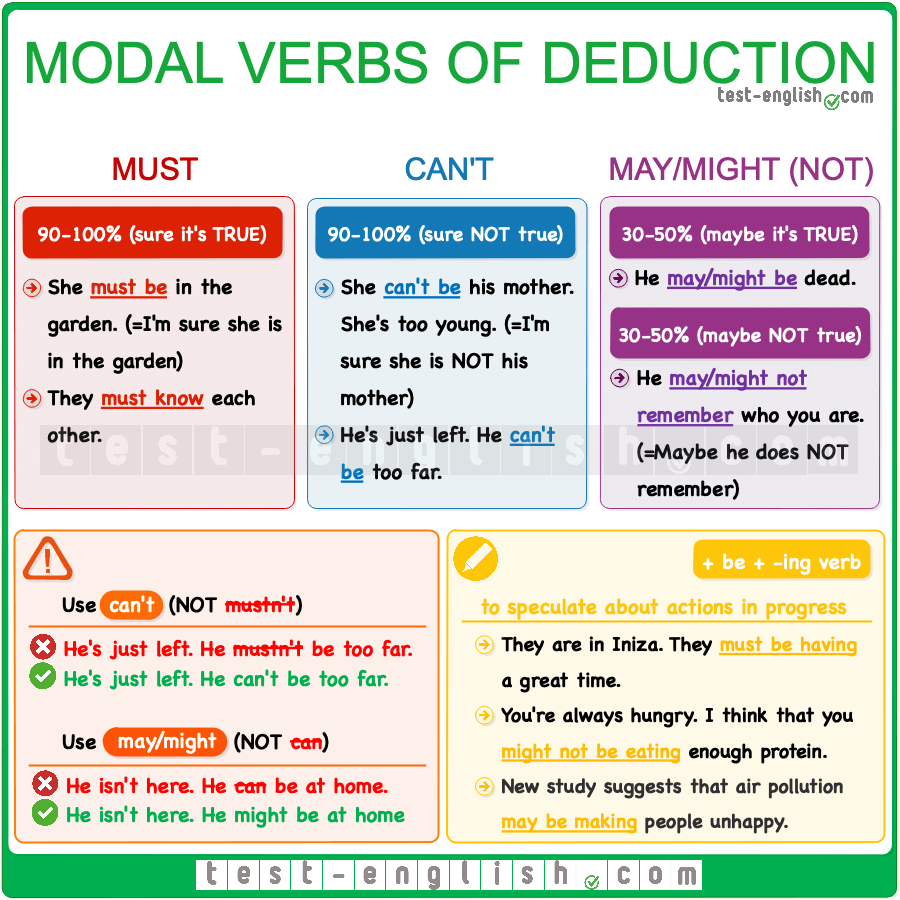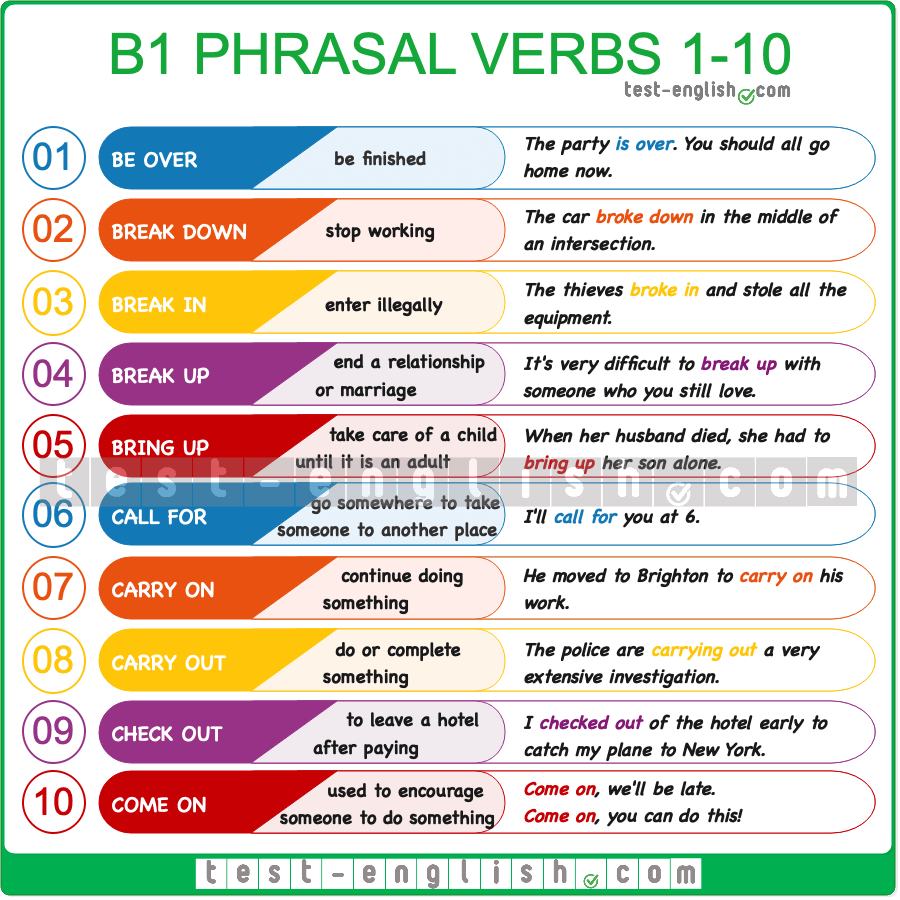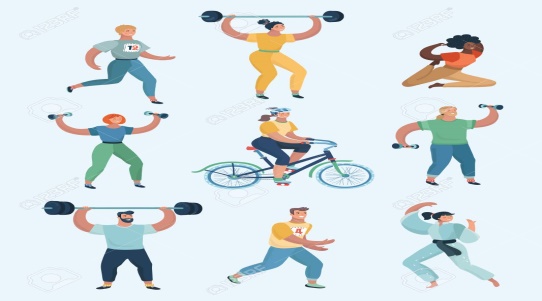Бұл материал сайт қолданушысы жариялаған. Материалдың ішінде жазылған барлық ақпаратқа жауапкершілікті жариялаған қолданушы жауап береді. Ұстаз тілегі тек ақпаратты таратуға қолдау көрсетеді. Егер материал сіздің авторлық құқығыңызды бұзған болса немесе басқа да себептермен сайттан өшіру керек деп ойласаңыз осында жазыңыз

Бонусты жинап картаңызға (kaspi Gold, Halyk bank) шығарып аласыз
1 жыл бойы тегін жүктеу мүмкіндігіне ие болыңыз!

жеңілдік
Lesson plans Excel 9 Term 1

Short term plan
|
Unit 1: Hobbies and qualities lesson 1 |
School: |
||
|
Date: |
Teacher name: |
||
|
Grade: 9 |
Number present: |
absent: |
|
|
Lesson title |
Vocabulary: Hobbies |
||
|
Learning objectives |
9.1.6.1 organize and present information clearly to others 9.3.3.1 explain and justify their own point of view on a range of general and curricular topics |
||
|
Learning objectives (assessment criteria) |
Learners will be able to: - Talk about hobbies - Express preferences - Get an overview of the module |
||
|
Levels of thinking skills |
Knowledge and comprehension |
||
|
Stages/ Time |
Teachers actions |
Students actions |
Assessment |
Resources |
|
Beginning 5 min |
Greeting. (Whale class, Individually) T tells the class to make groups of 2. Warm up: With books closed, ask: How would you describe your personality? Elicit a few ideas from individual students. Put students into pairs to write down as many words they can think of associated with personality. Write attributes on the board and ask students if they think people with certain attributes are suited to particular hobbies. Ask: What kind of people are suited to playing chess? Accept all answers. T: What do you think about today’s theme? Setting the aim of the lesson.
|
Learners read the given sentences on the board and guess the topic and share with their ideas. Remember and recognize the main vocabulary. Learners fill the sheets of papers by classifying hobbies in together |
Teacher controles the process, gives feedback and asks additional questions if it’s nessasery. Teacher evaluate pupils with phrases like: “Good job! Well done!” Formative Assessment
|
Sheets of peppers Pictures of to be
https://images.app.goo.gl/Z3pr17A25qacaj3N9
|
|
Middle 30 min |
Task. I (Wh, I) (pair dicsussion) Ex: 1 P: 5 Go through the list of words and explain the meanings of any unknown words. Then ask students to read the phrases and look at the pictures and complete the task. |
Learners complete the phrases with verbs from the list. ANSWERS a make b take c go d play e collect |
T’s feedback Descriptor: - read the phrases - complete the phrases Total: 2 point |
Student’s book |
|
|
Task. II (Wh, I) (Task for location) Ex: 2 P:5 Go through the list of themes and explain the meanings of any unknown words. Then ask students to look at the pictures and say which of the ones from ex. 1 they can see and then give students time to match them to the themes given. A learner with individual needs: will be supported by teacher and by helpers from his class. |
Learners answer the question. Which of the hobbies in ex 1 can you see in the pictures? Which are related: sports, the arts, technology, art and crafts, music? ANSWERS 1 skydiving 2 paintballing 3 play online games 4 collect stamps |
Self -assessment T’s CCQs
Descriptor: - look at the pictures - answer the question. Total: 2 point |
Worksheets Stickers |
|
|
Task. III (Task for understanding) Ex: 3 P:5 Ask students to talk in pairs of the activities in ex.1 They like /don’ like doing and why 1 using the phrases Monitor the activity around the class and then ask some students to share their answers with the class. |
Learners answer the question. Which of the activities in ex 1 do you enjoy doing in your free time. ANSWERS I really like going paintballing. I don’t like making jewellery. I enjoy taking photos and playing online games. I don’t like making model cars or collecting stamps. |
T’s feedback
Descriptor: - talk in pairs - answer the question Total: 2 point |
Pictures Worksheet |
|
|
Ex: 4 p: 5 Explain the task and read out the adjectives and explain the meanings of any unknown words. Ask students to ask and answers in pairs following the example |
Students ask and answer questions about the hobbies in ex 1 ANSWERS Students’ own answer |
Descriptor: - read out the adjectives - ask and answer questions Total: 2 point |
|
|
End 5 min |
“Finger” method is used to find out was the lesson clear or not. 5 fingers- I understood 4 fingers -I have some questions 2 fingers-I need a help Ex: P: Home task |
Ss show their knowledge according to the lesson Ss evaluate each other and encourage classmate with phrases like: W |
Poster Success Ladder |
|
Short term plan
|
Unit 1: Hobbies and qualities lesson 2 |
School: |
||
|
Date: |
Teacher name: |
||
|
Grade: 9 |
Number present: |
absent: |
|
|
Lesson title |
Reading: Shark attack |
||
|
Learning objectives |
9.2.1.1 understand the main points in unsupported extended talk on a wide range of general and curricular topics; 9.4.2.1 understand specific information and detail in texts on a range of familiar general and curricular topics, including some extended texts; 9.6.12.1 use an increased variety of comparative degree adverb structures with regular and irregular adverbs use a variety of pre-verbal, post-verbal and end-position adverbs on a range of familiar general and curricular topics |
||
|
Learning objectives (assessment criteria) |
Learners will be able to: - Narrate an experience - Listen and read for gist - Read for specific information |
||
|
Levels of thinking skills |
Knowledge and comprehension |
||
|
Stages/ Time |
Teachers actions |
Students actions |
Assessment |
Resources |
|
Beginning 5 min |
Greeting. (Whale class, Individually) T tells the class to make groups of 2. Warm up: Pantomime: 'What do you like? Play the game in 2 groups. One pupil from each group comes to the board and mimes a hobby. The other group tries to guess the hobby. If they guess correctly, they win one point. At the end of the game, the group with the most points is the winner. T: What do you think about today’s theme? Setting the aim of the lesson.
|
Learners read the given sentences on the board and guess the topic and share with their ideas. Remember and recognize the main vocabulary. |
Teacher controles the process, gives feedback and asks additional questions if it’s nessasery. Teacher evaluate pupils with phrases like: “Good job! Well done!” Formative Assessment
|
Sheets of peppers Pictures of to be
https://images.app.goo.gl/qEn6gC3pmoRDFH1KA |
|
Middle 30 min |
Task. I (Wh, I) (pair dicsussion) Ex: 1 P: 6 a)To introduce the topic Ask various Ss around experiences with the class. b) To predict the content of the text Direct Ss' attention to the photographs and give 5s a minute to read the Check these words box. Elicit Ss' guesses as to what the text is about. Play the recording, Ss listen and follow the text in their books and check if their guesses were correct |
Learners tell the class about a nasty experience you had. Use appropriate adverbs. ANSWERS I think Bethany was attacked by a shark and has continued surfing. |
Feedback: “Thumbs up, thumbs down” After correct answer teacher shows thumbs up, if there are some mistakes thumbs down with comments Descriptor: - tell the class about a nasty - use appropriate adverbs Total: 2 point |
Student’s book |
|
|
Task. II (Wh, I) (Task for location) Ex: 2 P: 6 Read for specific information Give Ss time to read the text again and answer the questions. Read out the Did you know? box. Check Ss' answers.
T asks some CCQs:
|
Students read the text and answer the question. ANSWERS 1 When Bethany was 13, she went surfing with her friends at Tunnels Beach. A shark attacked her and bit off her left arm. 2 Bethany managed to surf again by finding a way to pull herself up onto her surfboard. 3 Bethany's father helped her by fitting a special handle on her surfboards, Learners answers Yes or No in CCQ ANSWERS - Yes - No - Yes |
Self -assessment
Descriptor: - read the text - answer the question. Total: 2 point Descriptor: - answers Yes or No |
Worksheets https://images.app.goo.gl/4nvi8vgqm1fiUjGz5 |
|
|
Task. III (Task for understanding) Ex: 3 P: 7 Give Ss time to complete the task and check their answers in the dictionaries. Elicit answers from Ss around the class.
|
Learners choose the correct word. Check in your dictionary. ANSWERS 1 attacked 2 lost 3 catch 4 escape 5 promised 6 entered 7 won 8 overcame |
T’s feedback Descriptor: - choose the correct word Total: 2 point |
Pictures Worksheet |
|
|
Task. IV Ex: 4 P: 7 Explain the task. Tell Ss to think about where they were during the accident/why they were there. Ss prepare their answers. Ask various Ss around the class to describe their experience. A learner with individual needs: will be supported by teacher and by helpers from his class. Less motivated learner work in pairs to imagine Bethany’s accident |
Learners imagine you were a witness to Bethany’s accident. Describe the experience and your feelings. ANSWERS Students’ own answer |
Descriptor: - imagine you were a witness - describe the experience. Total: 2 point |
|
|
|
Task. V Ex: 5 P: 7 Explain the task. Draw Ss' attention to the hobbies in the pictures and the equipment in the list and then Ss match them. Play the recording. Ss listen and repeat chorally and/or individually. Check Ss pronunciation Differentiation with individual need learners: will be paired with helpers and teacher allows him to complete the sentences with. |
Students match the words to the numbers. Listen and check ANSWERS 1 rugby ball 2 wood 3 carving tool 4 goggles 5 gloves 6 skis 7 drumstick 8 drum kit 9 canoe 10 paddle |
Self -assessment T s feedback Descriptor: - match the words - listen and repeat Total: 2 point |
|
|
End 5 min |
The Ladder method was used as a reflection. T asks Ss to stick their stickers to the Success Ladder. Green- I understood Yellow-I have some questions Red-I need a help. Home task Ex: P: |
Ss use their stickers to show their knowledge according to the lesson
|
Poster Success Ladder |
|
Short term plan
|
Unit 1: Hobbies and qualities lesson 3 |
School: |
||
|
Date: |
Teacher name: |
||
|
Grade: 9 |
Number present: |
absent: |
|
|
Lesson title |
Vocabulary: hobbies and equipment |
||
|
Learning objectives |
9.3.7.1 use appropriate subject-specific vocabulary and syntax to talk about a wide increased range of general and curricular topics 9.6.15.1 use infinitive forms after a growing number of adjectives and verbs, use gerund forms after a growing variety of verbs and prepositions, use an increased variety of prepositional verbs and phrasal verbs on a range of familiar general and curricular topics; |
||
|
Learning objectives (assessment criteria) |
Learners will be able to: - Practise making suggestions - Present and practise prepositional phrases. |
||
|
Levels of thinking skills |
Knowledge and comprehension |
||
|
Stages/ Time |
Teachers actions |
Students actions |
Assessment |
Resources |
|
Beginning 5 min |
Greeting. (Whale class, Individually) T tells the class to make groups of 2. Warm up: With books closed, ask students if they have seen photographs of their parents and grandparents when they were young. Ask: What were their clothes like? What were their hairstyles like? T: What do you think about today’s theme? Setting the aim of the lesson.
|
Learners read the given sentences on the board and guess the topic and share with their ideas. Remember and recognize the main vocabulary. |
Teacher controles the process, gives feedback and asks additional questions if it’s nessasery. Teacher evaluate pupils with phrases like: “Good job! Well done!” Formative Assessment
|
Sheets of peppers Pictures of to be
https://images.app.goo.gl/ZLzbuunSN9i8EhSb6
|
|
Middle 30 min |
Task. I (Wh, I) (pair dicsussion) Ex: 6 P: 7 Explain the task and ask two Ss to model the example exchange Have Ss work in pairs and make suggestions, as in the example. Monitor the activity around the class and then ask some pairs to make suggestions in front of the class. |
Learners you want to try the hobbies. Act out exchanges, as in the example. ANSWERS A: Why don't we make a wood sculpture? B: That's a good idea. What do we need. A: We need wood and a carving tool. B: OK. Let's get them. A: Why don't we go canoeing? B: That's a good idea. What do we need? A: We need a boat and a paddle. B: Ok. Let's get them. |
Feedback: “Thumbs up, thumbs down” After correct answer teacher shows thumbs up, if there are some mistakes thumbs down with comments Descriptor: - work in pairs - and make suggestions Total: 2 point |
Student’s book |
|
|
Task. II (Wh, I) (Task for location) Ex: 7 P: 7 present and practise prepositional phrases Give Ss time to complete the sentences using their dictionaries to check. Check Ss' answers. |
Learners choose the correct preposition. ANSWERS 1 in 2 to 3 for 4 at 5 with |
Self -assessment
Descriptor: - practise prepositional phrases - choose the correct preposition Total: 2 point |
Worksheets |
|
|
Task. III (Task for understanding) Ex: 8 P: 7 Summarise a text Go through the Study Skills box and then give Ss time to read the text in Ex. 2 again, make notes and prepare a summary. Check Ss' answers by asking various Ss to read their summaries aloud. Alternatively, assign the task as HW and check Ss'
A learner with individual needs: will be supported by teacher and by helpers from his class. |
Learners write a summary of the text. Read your summary to the class. ANSWERS A girl called Bethany Hamilton lost her arm in a shark attack in 2003. The attack happened when Bethany was surfing at Tunnels Beach in Hawaii with her friends. Bethany did not see the shark that bit her. Bethany's friends rescued her and took her to the hospital. Bethany lost a lot of blood and doctors told her she was lucky to be alive. Only a few weeks after the attack, she started surfing again. Her father fitted a special handle on her board. At first, it was very difficult, but she amazed everyone. Bethany managed to win a surfing competition after the attack. Bethany says nothing will stop her from doing what she loves the most. |
T’s comment Descriptor: - write a summary of the text Total: 2 point |
Pictures Worksheet |
|
End 5 min |
The Ladder method was used as a reflection. T asks Ss to stick their stickers to the Success Ladder. Green- I understood Yellow-I have some questions Red-I need a help. Ex: P: Home task |
Ss use their stickers to show their knowledge according to the lesson
|
Poster Success Ladder |
|
Short term plan
|
Unit 1: Hobbies and qualities lesson 4 |
School: |
||
|
Date: |
Teacher name: |
||
|
Grade: 9 |
Number present: |
absent: |
|
|
Lesson title |
Use of English: Present simple, Present continuous |
||
|
Learning objectives |
9.5.2.1 write independently about factual and imaginary past events, activities and experiences on a range of familiar general and curricular topics 9.6.7.1 use a variety of simple perfect forms including some passive forms, including time adverbials on a range of familiar general and curricular topics; |
||
|
Learning objectives (assessment criteria) |
Learners will be able to: - Revise the present simple, the present continuous, the past simple and the past continuous - Present the present perfect and the past perfect - Revise the future tenses |
||
|
Levels of thinking skills |
Knowledge and comprehension |
||
|
Stages/ Time |
Teachers actions |
Students actions |
Assessment |
Resources |
|
Beginning 5 min |
Greeting. (Whale class, Individually) T tells the class to make groups of 2. Warm up: Ask students to close their eyes and think about a person that its important for them (like their mom, dad, husband, wife, dog, etc), tell them to think about what are they doing right now (for example 'She is preparing lunch', 'he is working', 'he is running'. Make sure the students are using the correct form of Present Continuous, be at hand to correct mistakes or provide help with some vocabulary students may need to make their sentences. There are six chairs in the classroom. Setting the aim of the lesson.
|
Learners read the given sentences on the board and guess the topic and share with their ideas. Remember and recognize the main vocabulary. |
Teacher controles the process, gives feedback and asks additional questions if it’s nessasery. Teacher evaluate pupils with phrases like: “Good job! Well done!” Formative Assessment
|
Sheets of peppers Pictures of to be
|
|
Middle 30 min |
Task. I (Wh, I) (pair dicsussion) Ex: 1 P: 8 • Ask Ss to read the examples in the box and then identify the verb forms in each one. • Then give Ss time to read through the uses (a-j) and match them to the examples (1-10). • Check Ss' answers. Differentiation with individual need learners: will be paired with helpers and teacher allows him to read the examples and match them with support |
Learners make sentences using these tenses ANSWERS 1 d 2 h 3 I 4 a 5 f 6 g 7 b 8 e 9 c 10 j |
T’s feedback Descriptor: - read the examples - match them to the examples Total: 2 point |
Student’s book |
|
|
Task. II (Wh, I) (Task for location) Ex: 2 P: 8 Explain that we use the present perfect to talk about actions that happened at an unstated time in the past and for experiences. • Explain that we form the present perfect with have/has (not) + the past participle of the main verb. • Explain that we use the past perfect to talk about an action which happened in the past with a visible result in the past and for an action which happened in the past before another past action. |
Learners read the theory. Then use phrases in the brackets to make sentences. ANSWERS 2 She bought a new camera 3 They had won first prise 4 We haven’t heard from Bob yet |
Feedback: “Thumbs up, thumbs down” After correct answer teacher shows thumbs up, if there are some mistakes thumbs down with comments Descriptor: - read the theory. - use phrases Total: 2 point |
Worksheets |
|
|
Task. III (Task for understanding) Ex: 3 P: 8 Ask Ss to read out the examples and then uses and match them. Check Ss' answers around the class. Ask Ss to read out the examples and then uses and match them. Check Ss' answers around the class. Differentiation: A learner with individual needs: will be supported by teacher and by helpers from his class |
Students read the examples. ANSWERS 1 on-the-spot decision 2 a future prediction based on what we think will happen 3 a future prediction based on what we see 4 a gradually developing situation visible opened 5 a fixed arrangement in the near future 6 a future plan or intention 7 a timetable 8 a promise |
T’s comment Descriptor: - read the examples. - match them Total: 2 point |
Student’s book |
|
End 5 min |
The Ladder method was used as a reflection. T asks Ss to stick their stickers to the Success Ladder. Green- I understood Yellow-I have some questions Red-I need a help. Ex: P: Home task |
Ss use their stickers to show their knowledge according to the lesson
|
Poster Success Ladder |
|
Short term plan
|
Unit 1: Hobbies and qualities lesson 5 |
School: |
||
|
Date: |
Teacher name: |
||
|
Grade: 9 |
Number present: |
absent: |
|
|
Lesson title |
Use of English: The passive |
||
|
Learning objectives |
9.5.2.1 write independently about factual and imaginary past events, activities and experiences on a range of familiar general and curricular topics 9.6.9.1 use appropriately an increased variety of active and passive simple present and past forms and past perfect simple forms in narrative and reported speech on a range of familiar general and curricular topics |
||
|
Learning objectives (assessment criteria) |
Learners will be able to: -learn the future continuous and the future perfect - revise the passive - practice the passive |
||
|
Levels of thinking skills |
Knowledge and comprehension |
||
|
Stages/ Time |
Teachers actions |
Students actions |
Assessment |
Resources |
|
Beginning 5 min |
Greeting. (Whale class, Individually) T tells the class to make groups of 2. Warm up: Write make, do, collect and write on the board as headings. With books closed, students work in pairs and brainstorm words you use with each Setting the aim of the lesson.
|
Learners read the given sentences on the board and guess the topic and share with their ideas. Remember and recognize the main vocabulary. |
Teacher controles the process, gives feedback and asks additional questions if it’s nessasery. Teacher evaluate pupils with phrases like: “Good job! Well done!” Formative Assessment |
Sheets of peppers Pictures of to be
https://images.app.goo.gl/Nitsu9ieRGNJKzrTA
|
|
Middle 30 min |
Task. I (Wh, I) (pair dicsussion) Ex: 4 P: 9 Give Ss time to complete the task and then check their answers. |
Learners choose the correct verb forms ANSWERS 1 'll join 2 will be 3 're going to trip 4 'll turn |
T’s feedback Descriptor: - choose the correct verb - complete the task Total: 2 point |
Student’s book |
|
|
Task. II (Wh, I) (Task for location) Ex: 5 P: 9 Explain that we form the future continuous with personal pronoun + will/won't be + verb+-ing. Explain that we use this tense to talk about an action in progress at a specific time in the future. Explain that we form the future perfect with will have + past participle. Explain that we use this tense to talk about an action that will have finished before a stated time in the future. |
Learners read the theory. Then put the verbs in brackets into the correct tense. ANSWERS 1 will be canoeing 2 will be skiing 3 won't have finished |
Self -assessment
Descriptor: - read the theory - put the verbs into the correct tense Total: 2 point |
Worksheets Student’s book |
|
|
Task. III (Task for understanding) Ex: 6 P: 9 Read the theory aloud and explain how we form the passive voice (the verb 'to be' + past participle of the main verb). Explain that we use the passive to talk about actions when the person who does the action is unknown, unimportant or obvious from the context; when the action is more important than the person who does it; and in formal situations (e.g. on signs. |
Learners read the theory. Then put the verbs in brackets into the passive. ANSWERS 1 is taught 2 are held 3 will be announced 4 wasn't allowed |
Feedback: “Thumbs up, thumbs down” After correct answer teacher shows thumbs up, if there are some mistakes thumbs down with comments Descriptor: - read the theory - put the verbs into the passive Total: 2 point |
Pictures Worksheet |
|
|
Task. IV Ex: 7 P: 9 Give Ss time to rewrite the sentences in the passive and elicit answers from Ss around the class. Tell Ss to omit the agent where it is unnecessary. Differentiation with individual need learners: will be paired with helpers and teacher allows him to rewrite the sentences in the passive form |
Learners rewrite the sentences in the passive form in your notebook. Use the agent here necessary. ANSWERS 1 Photos will be taken by Korkem. 2 The garden was being decorated. 3 A sand sculpture had been made by Berik. 4 A horse riding club is being organised. 5 A competition is held every year. 6 Ten new after-school clubs are being created. 7 A goal was scored. 8 The basketball match was watched by hundreds of people |
T’s feedback
Descriptor: - rewrite the sentences - use the passive Total: 2 point |
|
|
End 5 min |
The Ladder method was used as a reflection. T asks Ss to stick their stickers to the Success Ladder. Green- I understood Yellow-I have some questions Red-I need a help. Ex: P: Home task |
Ss use their stickers to show their knowledge according to the lesson
|
Poster Success Ladder |
|
Short term plan
|
Unit 1: Hobbies and qualities lesson 6 |
School: |
||
|
Date: |
Teacher name: |
||
|
Grade: 9 |
Number present: |
absent: |
|
|
Lesson title |
Reading: Turning your hobby into a business |
||
|
Learning objectives |
9.3.5.1 interact with peers to negotiate, agree and organise priorities and plans for completing classroom tasks 9.4.2.1 understand specific information and detail in texts on a range of familiar general and curricular topics, including some extended texts |
||
|
Learning objectives (assessment criteria) |
Learners will be able to: - Generate topic – related vocabulary - Read for gist - Read for specific information |
||
|
Levels of thinking skills |
Knowledge and comprehension |
||
|
Stages/ Time |
Teachers actions |
Students actions |
Assessment |
Resources |
|
Beginning 5 min |
Greeting. (Whale class, Individually) T tells the class to make groups of 2. Warm up: • Elicit the answer (she was dancing) and write the sentence on the board: She was dancing when she heard the music. • Underline the verbs and elicit that they are in the past continuous and past simple. • Ask: Which action happened first? (she was dancing); Did she continue dancing when she heard it? (yes) Setting the aim of the lesson.
|
Learners read the given sentences on the board and guess the topic and share with their ideas. Remember and recognize the main vocabulary. |
Teacher controles the process, gives feedback and asks additional questions if it’s nessasery. Teacher evaluate pupils with phrases like: “Good job! Well done!” Formative Assessment
|
Sheets of peppers Pictures of to be
https://images.app.goo.gl/Dpsn3hRJw4tHUxyt7
|
|
Middle 30 min |
Task. I (Wh, I) (pair dicsussion) Ex: 1 P: 10 Give Ss a one-minute time limit to think of as many jobs as they can and write them in their notebooks. Elicit answers from around the class. |
Learners in one minute, write down as many jobs as you can think of. Compare answers with your partner. ANSWERS Students’ own answer |
T’s feedback Descriptor: - write down as many jobs - compare answers Total: 2 point |
Student’s book |
|
|
Task. II (Wh, I) (Task for location) Ex: 2 P: 13 Ask Ss to read the title and the introduction of the text. Elicit Ss' guesses as to what the text is about. Play the recording. Ss read the text and find out. Differentiation: Learners will be supported by teacher and by helpers from his class. |
Learners read the title and the introduction. ANSWERS The text is about a woman in Kazakhstan called Bakhargul Tolegenkyzy who turned her hobby into a business |
Pair -assessment
Descriptor: - read the title - guess the text Total: 2 point |
Student’s book |
|
|
Task. III (Wh, I) (Task for location) Ex: 3 P: 10 Ask Ss to read the statements 1-5. • Give Ss time to read the text and complete the task by marking the statements as true or false. • Check Ss' answers around the class.
|
Learners read the interview again and decide if the sentences below are T (true) or F (false) ANSWERS 1 F 2 F 3 T 4 T 5 F |
Descriptor: - read the interview - write true or false Total: 2 point |
Student’s book |
|
|
Task. IV (Wh, I) (Task for location) Ex: 4 P: 10 Read out the question and give Ss time to consider their answers and then ask various Ss around the class to share their answers with the rest of the class |
Learners answer the question ANSWERS Most people will have to spend many years of their life working and if you don't do something enjoyable then a large part of your life will make you unhappy. If you do something that makes you happy then your job will not feel like 'work' because you enjoy it so much. |
Feedback: “Thumbs up, thumbs down” After correct answer teacher shows thumbs up, if there are some mistakes thumbs down with comments Descriptor: - read out the question - answer the question Total: 2 point |
Student’s book |
|
End 5 min |
The Ladder method was used as a reflection. T asks Ss to stick their stickers to the Success Ladder. Green- I understood Yellow-I have some questions Red-I need a help. Ex: P: Home task |
Ss use their stickers to show their knowledge according to the lesson
|
Poster Success Ladder |
|
Short term plan
|
Unit 1: Hobbies and qualities lesson 7 |
School: |
||
|
Date: |
Teacher name: |
||
|
Grade: 9 |
Number present: |
absent: |
|
|
Lesson title |
Phrasal verbs (turn) |
||
|
Learning objectives |
9.2.2.1 understand most specific information in unsupported extended talk on a wide range of general and curricular topics 9.3.7.1 use appropriate subject-specific vocabulary and syntax to talk about a wide increased range of general and curricular topics 9.6.15.1 use infinitive forms after a growing number of adjectives and verbs, use gerund forms after a growing variety of verbs and prepositions, use an increased variety of prepositional verbs and phrasal verbs on a range of familiar general and curricular topics; |
||
|
Learning objectives (assessment criteria) |
Learners will be able to: - Present and practice phrasal verbs with turn. - Practice forming verbs with prefixes - Listen for specific information |
||
|
Levels of thinking skills |
Knowledge and comprehension |
||
|
Stages/ Time |
Teachers actions |
Students actions |
Assessment |
Resources |
|
Beginning 5 min |
Greeting. (Whale class, Individually) T tells the class to make groups of 2. Warm up: With books closed, ask students what important days they can remember from the past. Elicit some answers, e.g. the first day at a new school, a holiday, Christmas day, etc. Ask students to describe what they remember and how they felt Setting the aim of the lesson.
|
Learners read the given sentences on the board and guess the topic and share with their ideas. Remember and recognize the main vocabulary. |
Teacher controles the process, gives feedback and asks additional questions if it’s nessasery. Teacher evaluate pupils with phrases like: “Good job! Well done!” Formative Assessment |
Sheets of peppers Pictures of to be
https://images.app.goo.gl/QDFg8uVbAFpbTMF56
|
|
Middle 30 min |
Task. I (Wh, I) (pair dicsussion) Ex: 5 P: 11 Read out the box and explain the task. Give Ss time to complete the task. Check Ss' answers. Differentiation: Learners will be supported by teacher and by helpers from his class. |
Learners choose the correct particle. Make sentences using the other option. ANSWERS 1 into 2 down 3 off 4 up 5 to |
Pair assessment Descriptor: - read out the box - make sentences Total: 2 point |
Student’s book |
|
|
Task. II (Wh, I) (Task for location) Ex: 6 P: 11 Aim To practise forming verbs with prefixes Ask Ss to read the table and then use appropriate prefixes with the verbs in brackets to complete the sentences. Check Ss' answers around the class. |
Learners use appropriate prefixes and the verbs in brackets to complete the sentences ANSWERS 1 disobey 2 overslept 3 resend 4 discourage 5 misslept |
T’s ffedback
Descriptor: - read the table - complete the sentences Total: 2 point |
Worksheets Student’s book |
|
|
Task. III (Task for understanding) Ex: 7 P: 11 Explain the task and ask Ss to read the statements 1-5. Play the recording, then Ss listen and mark the statements according to what they hear, Check Ss' answers. Differentiation: A less motivated learner work in pairs, and do the example with support. |
Learners listen to an interview about Damegul Abikhanova and mark the statements ANSWERS 1 F 2 F 3 T 4 T 5 F |
Pair assessment
Descriptor: - read the interview - rite true or false Total: 2 point |
|
|
|
Task. IV Ex: 8 P: 11 Explain the task. Tell Ss to work in pairs and take turns to interview each other about their hobbies using the questions provided. Give Ss time to complete the task and monitor the activity and then ask various pairs to act out their interviews in front of the class Differentiation with individual need learners: will be paired with helpers and teacher allows him to interview your partner about his / her hobby |
Learners work in pairs. Interview your partner about his / her hobby ANSWERS A: What's your hobby? 8: 1 play football. I play at school and I play for a local team in my town. A: When do you do it? B: I practise three times a week and I play a match on Saturday or Sunday. A: Why do you like it? B: It's fun. I just really enjoy it and I'm good at it. A: Would you like to do it professionally in the future? B: Yes, I would. I think it would be fantastic to earn a living as a professional footballer and to represent my country internationally. A: How can your hobby help you find the right job in the future? B: Well, if I don't become a professional footballer, I think I will have at least learnt all about team work and that is a good skill for a job. |
T’s comment Descriptor: - work in pairs - mark the statements Total: 2 point |
|
|
End 5 min |
The Ladder method was used as a reflection. T asks Ss to stick their stickers to the Success Ladder. Green- I understood Yellow-I have some questions Red-I need a help. Ex: P: Home task |
Ss use their stickers to show their knowledge according to the lesson
|
Poster Success Ladder |
|
Short term plan
|
Unit 1: Hobbies and qualities lesson 8 |
School: |
||
|
Date: |
Teacher name: |
||
|
Grade: 9 |
Number present: |
absent: |
|
|
Lesson title |
Everyday English: Discussing career options |
||
|
Learning objectives |
9.2.2.1 understand most specific information in unsupported extended talk on a wide range of general and curricular topics 9.6.11.1 use an increased variety of reported speech forms for statements, questions and commands, including indirect and embedded questions with know, wonder on a range of familiar general and curricular topics; |
||
|
Learning objectives (assessment criteria) |
Learners will be able to: - Present situational language and the speakers - Identify synonymous phrases in a situational dialogue - Act out a dialogue |
||
|
Levels of thinking skills |
Knowledge and comprehension |
||
|
Stages/ Time |
Teachers actions |
Students actions |
Assessment |
Resources |
|
Beginning 5 min |
Greeting. (Whale class, Individually) T tells the class to make groups of 2. Warm up: Answer the questions 1. What interests me? 2. What are my current skills? 3. What kind of personality do I have? 4. What education or training do I need to fulfill my career goals? 5. What is the job outlook for this career? 6. What's my ideal work-life balance?
|
Learners read the given sentences on the board and guess the topic and share with their ideas. Remember and recognize the main vocabulary. Watch video answer the question |
Teacher controles the process, gives feedback and asks additional questions if it’s nessasery. Teacher evaluate pupils with phrases like: “Good job! Well done!” Formative Assessment
|
Sheets of peppers Pictures of to be
https://youtu.be/9CuMioMQcxk?si=2bbpSPGNeiIs5tF0 |
|
Middle 30 min |
Task. I (Wh, I) (pair dicsussion) Ex: 1 P: 15 Read through the questions and make sure everyone understands. In a weaker class, students can compare answers in pairs before checking as a class. In a stronger class, set a short time limit and tell students to skim read the text for the information in the questions. |
Learners read the model text and answer the questions. ANSWERS 1 a 2 Paragraph 2 3 Paragraph 4 |
Pair assessment
Descriptor: - read the model text - answer the questions Total: 2 point |
Student’s book |
|
|
Task. II (Wh, I) (Task for location) Ex: 2 P: 15 Read through the key phrases with the class. Ask students to find the key phrases in the model text and translate them into their own language |
Learners study the key phrases. Which phrases introduce the paragraphs in the text? ANSWERS Paragraph 1: The … was a decade which … Paragraph 2: In the world of fashion … Paragraph 3: One of the most memorable … Paragraph 5: By the end of the decade.. |
T’s ffedback
Descriptor: - study the key phrases - to find the key phrases Total: 2 point |
Worksheets Student’s book |
|
|
Task. III (Task for understanding) Ex: 3 P: 15 Look at the words in blue in the model text. Elicit what their role is (to introduce examples). • Point out the use of commas with for instance and for example. • Students complete sentences 1–4 individually with their own ideas. • Ask some students to read their sentences to the class. Differentiation: A less motivated learner translate the sentences with by helpers |
Learners study the words in blue in the model text. Then complete sentences with these words and your own ideas ANSWERS Student’s own answer |
Feedback: “Thumbs up, thumbs down” After correct answer teacher shows thumbs up, if there are some mistakes thumbs down with comments Descriptor: - study the words in blue - complete sentences Total: 2 point |
|
|
End 5 min |
The Ladder method was used as a reflection. T asks Ss to stick their stickers to the Success Ladder. Green- I understood Yellow-I have some questions Red-I need a help. Ex: P: Home task |
Ss use their stickers to show their knowledge according to the lesson
|
Poster Success Ladder |
|
Short term plan
|
Unit 1: Hobbies and qualities lesson 9 |
School: |
||
|
Date: |
Teacher name: |
||
|
Grade: 9 |
Number present: |
absent: |
|
|
Lesson title |
Across cultures: Let’s have fun! |
||
|
Learning objectives |
9.2.1.1 understand the main points in unsupported extended talk on a wide range of general and curricular topics; 9.4.4.1 read a range of extended fiction and non-fiction texts on familiar and unfamiliar general and curricular topics; 9.5.2.1 write independently about factual and imaginary past events, activities and experiences on a range of familiar general and curricular topics |
||
|
Learning objectives (assessment criteria) |
Learners will be able to: - Introduce the topic - Personalise the topic - Prepare a questionnaire on free time activities |
||
|
Levels of thinking skills |
Knowledge and comprehension |
||
|
Stages/ Time |
Teachers actions |
Students actions |
Assessment |
Resources |
|
Beginning 5 min |
Greeting. (Whale class, Individually) T tells the class to make groups of 2. Warm up: • Ask students to work in pairs and talk about what they know about their grandparents as young people. What jobs did they do and what did they do in their free time? • When they have finished, they join a second pair and tell each other what they’ve found out about their partner’s grandparents. Setting the aim of the lesson.
|
Learners read the given sentences on the board and guess the topic and share with their ideas. Remember and recognize the main vocabulary. |
Teacher controles the process, gives feedback and asks additional questions if it’s nessasery. Teacher evaluate pupils with phrases like: “Good job! Well done!” Formative Assessment |
Sheets of peppers Pictures of to be
https://images.app.goo.gl/ag5gs5Jb4FMVtjyP8
|
|
Middle 30 min |
Task. I (Wh, I) (pair dicsussion) Ex: 1 P: 13 Read the rubric aloud and elicit a variety of answers to the questions from Ss around the class. Ask various Ss how they spend their free time. Play the recording. Ss listen and follow the text in their books and find out |
Learners listen and read to find out. Tell your partner. What do teenagers in your country like doing in their free time? ANSWERS Teenagers in my country play a lot of sports, especially outdoor sports. I think different people in different parts of the world spend their free time doing a variety of activities. |
Pair assessment Descriptor: - listen and read - answers to the questions Total: 2 point |
Student’s book |
|
|
Task. II (Wh, I) (Task for location) Ex: 2 P: 13 Give Ss some time to read the text and answer the questions. • Ask Ss to use the Word List to look up the meanings of the words in the • Check these words box, then check Ss' answers. |
Learners read the text and answer the questions. ANSWERS 1 Winters in Edmonton are long and cold with lots of snow. 2 George goes to the amusement park and the indoor water park at West Edmonton Mall and hangs out with his friends. He also goes shopping or to the cinema and he plays ice hockey. 3 Kazakhstan is known for its beautiful landscapes. 4 When there is bad weather, Zhaniya visits her friends' homes and listens to music or plays video games. She also likes hanging out at shopping malls. |
T’s ffedback
Descriptor: - read the text - answer the questions. Total: 2 point |
Worksheets Student’s book |
|
|
Task. III (Task for understanding) Ex: 3 P: 13 Explain the task. Ss work in pairs or small groups and prepare a questionnaire. Ss may use the one given and/or expand on it. Ss collect information form the other Ss to complete the questionnaire and make notes on their findings Ask various Ss to report their findings to the class using the phrases given. Differentiation with individual need learners: will be paired with helpers and teacher allows him to complete the questionnaire and make notes on their findings. |
Learners answer the question. ANSWERS Most of my classmates play a sport or do an outdoor activity with friends every week. They often visit markets and parks. Some of my classmates watch TV, watch DVDs, read books and listen to music in their free time. A few of my classmates go camping in their free time. Very few of my classmates go to the cinema or to a café every week. |
Self assessment Descriptor: - work in pairs - answer the question. Total: 2 point |
|
|
|
Task. IV (Task for understanding) Ex: 4 P: 13 Ask various Ss to answer the questions in the rubric and then give Ss time to write their answers down in the form of a comment post to a blog. Check Ss' answers. |
Learners post your comment on George’s blog. ANSWERS Life in Almaty is busy and active. I spend my free time playing sports or doing outdoor activities with my friends. I also watch TV, watch DVDs, read books and listen to music. I often visit markets and parks with my friends. I'm never bored because there is so much to do when you live in the city. |
Pair asessment
Descriptor: - post your comment on George’s blog. Total: 2 point |
|
|
End 5 min |
The Ladder method was used as a reflection. T asks Ss to stick their stickers to the Success Ladder. Green- I understood Yellow-I have some questions Red-I need a help. Ex: P: Home task |
Ss use their stickers to show their knowledge according to the lesson
|
Poster Success Ladder |
|
Short term plan
|
Unit 1: Hobbies and qualities lesson 10 |
School: |
||
|
Date: |
Teacher name: |
||
|
Grade: 9 |
Number present: |
absent: |
|
|
Lesson title |
Across the curriculum: What did Victorians do for fun? |
||
|
Learning objectives |
9.3.3.1 explain and justify their own point of view on a range of general and curricular topics 9.4.4.1 read a range of extended fiction and non-fiction texts on familiar and unfamiliar general and curricular topics; |
||
|
Learning objectives (assessment criteria) |
Learners will be able to: -Talk about life in the past - Discuss leisure activities - Present vocabulary related to seaside activities |
||
|
Levels of thinking skills |
Knowledge and comprehension |
||
|
Stages/ Time |
Teachers actions |
Students actions |
Assessment |
Resources |
|
Beginning 5 min |
Greeting. (Whale class, Individually) T tells the class to make groups of 2. Warm up: With books closed, ask students what makes them laugh. Elicit ideas about films, books, TV programmes, etc. and encourage students to express their opinions. Ask students if they know the character Mr Bean. Ask: Do you find him funny? Elicit a range of answers Did you watch film about Mr Bean? What does Mr Bean carry with him?
|
Learners read the given sentences on the board and guess the topic and share with their ideas. Remember and recognize the main vocabulary. |
Teacher controles the process, gives feedback and asks additional questions if it’s nessasery. Teacher evaluate pupils with phrases like: “Good job! Well done!” Formative Assessment
|
Sheets of peppers Pictures of to be
https://images.app.goo.gl/NsUUuJ66FVJhqaYK7 |
|
Middle 30 min |
Task. I (Wh, I) (pair dicsussion) Ex: 1 P: 14 With books closed, initiate a discussion about what life was like for people 150 years ago. Explain that the years 1837-1901 are known as the Victorian era because this was the time when Queen Victoria reigned in Great Britain. Ask Ss how periods of time are referred to in their own cultures. Ask Ss to look at the pictures and identify the main activities. Elicit various answers from Ss around the class. |
Learners look at the pictures from the Victorian era (1837- 1901). How do you think people spent their free time then? ANSWERS People spent time by the sea, taking part in or watching sport activities, going to the theatre or listening to gramophone records. |
Pair assessment
Descriptor: - look at the pictures - identify the main activities. Total: 2 point |
Student’s book |
|
|
Task. II (Wh, I) (Task for location) Ex: 2 P: 14 Ss work in pairs to complete the task. Elicit Ss' guesses as to what kind of people went to Swansea and what they could do there. As an extension, ask Ss which of the activities they enjoy doing. A learner with individual needs: will be supported by teacher and by helpers from his class. |
Learners look at picture A. What kind of people do you think went to Swansea and what could they do there? ANSWERS The people who went to Swansea probably lived in big cities away from the sea. They could do a lot of things there, including swimming, sailing, cycling, driving and going on steamer trips. |
T’s ffedback
Descriptor: - work in pairs - complete the task. Total: 2 point |
Worksheets Student’s book |
|
|
Task. III (Task for understanding) Ex: 3 P: 14 Tell Ss to read the text and match the information in the paragraphs to the headings. Explain that each heading relates to a key point in each text. Refer Ss to the four possible titles. Elicit possible meanings for each (e.g. 'By the sea!' - near the coast, etc). Give Ss time to read the text again and match each paragraph to a heading. Remind Ss that one heading is extra. 59 use dictionaries to find and explain the words in bold. Check answers from various Ss of the class. |
Learners read the text and match the headings to the paragraphs. One heading is extra. Listen and check. Then explain ANSWERS 1 D 2 A 3 C |
Feedback: “Thumbs up, thumbs down” After correct answer teacher shows thumbs up, if there are some mistakes thumbs down with comments Descriptor: - read the text - match the information Total: 2 point |
|
|
|
Task. IV (Task for understanding) Ex: 4 P: 14 Explain the task and read out the example. Ask Ss to work in pairs and ask and answer questions about the Victorians and their entertainment following the example and referring to the text. Monitor the activity around the class. |
Learners ask and answer the question ANSWERS A: Where did Victorians go for entertainment? B: They went to music halls and theatres to watch performances. A: What did Victorians read? B: They read newspapers, magazines or comics. A: When did they start going to the seaside? 8: Victorians began to go to the seaside when the railway system developed. A: Where did they get changed before they went in the sea? B: In wooden huts that they wheeled into the sea. A: What were some other popular hobbies of the Victorian era? B: Watching cricket, rugby and lacrosse as well as cycling |
Self assessment Descriptor: - work in pairs - ask and answer the question Total: 2 point |
|
|
End 5 min |
The Ladder method was used as a reflection. T asks Ss to stick their stickers to the Success Ladder. Green- I understood Yellow-I have some questions Red-I need a help. Ex: P: Home task |
Ss use their stickers to show their knowledge according to the lesson
|
Poster Success Ladder |
|
Short term plan
|
Unit 1 Hobbies and qualities lesson 11 |
School: |
||
|
Date: |
Teacher name: |
||
|
Grade: 9 |
Number present: |
absent: |
|
|
Lesson title |
Writing: A blog entry about your favorite hobby Summative Assessment for the unit «Hobbies and Qualities» |
||
|
Learning objectives |
9.4.5.1 deduce meaning from context in extended texts on a range of familiar general and curricular topics 9.5.5.1 develop with support coherent arguments supported when necessary by examples and reasons for a range of written genres in familiar general and curricular topics |
||
|
Learning objectives (assessment criteria) |
Learners will be able to: - Read for specific information - Read for structure and content - Write a blog entry about one’s favourite hobbies |
||
|
Levels of thinking skills |
Knowledge and comprehension |
||
|
Stages/ Time |
Teachers actions |
Students actions |
Assessment |
Resources |
|
Beginning 5 min |
Greeting. (Whale class, Individually) T tells the class to make groups of 2. Warm up: Ask students to work in pairs and talk about what they know about their grandparents as young people. What jobs did they do and what did they do in their free time? Setting the aim of the lesson.
|
Learners read the given sentences on the board and guess the topic and share with their ideas. Remember and recognize the main vocabulary. Watch the video |
Teacher controles the process, gives feedback and asks additional questions if it’s nessasery. Teacher evaluate pupils with phrases like: “Good job! Well done!” Formative Assessment |
Sheets of peppers Pictures of to be
https://youtu.be/GN8QTmC4tK0?si=4w3wG8gaM8yDGf18
|
|
Middle 30 min |
Task. I (Wh, I) (pair dicsussion) Ex: 1 P: 15 Ask Ss to read the text and then elicit what Nurlan's favourite hobby is. |
Learners look at the blog entry. What is Nuraln’s hobby? ANSWERS Nurlan's favourite hobby is playing baiga. |
Pair assessment
Descriptor: - read the text - identify Nurlan’s hobby Total: 2 point |
Student’s book |
|
|
Task. II (Wh, I) (Task for location) Ex: 2 P: 15 Explain the task and ask Ss to read the text again and match each paragraph to what it talks about. Check 5s' answers. • Ask Ss to use the Word List to look up the meanings of the words in the Check these words box. Differentiation: A less motivated learner to choose the correct words with support by helpers |
Students read the blog entry. In which paragraph does the writer? ANSWERS 1 D 4 C 2 B 3 A |
T’s ffedback
Descriptor: - read the text - match each paragraph Total: 2 point |
Worksheets Student’s book |
|
|
Task. III (Task for understanding) Ex: 3 P: 15 Ask Ss to scan the text for three adverbs and elicit the answers from ss around the class. Summative Assessment for the unit «Hobbies and Qualities» |
Learners find three adverbs. In the blog entry ANSWERS usually (frequency), extremely (manner), quickly/fast (degree) |
Pair assessment
- scan the text - find three adverbs Total: 2 point |
|
|
End 5 min |
The Ladder method was used as a reflection. T asks Ss to stick their stickers to the Success Ladder. Green- I understood Yellow-I have some questions Red-I need a help. Ex: P: Home task |
Ss use their stickers to show their knowledge according to the lesson
|
Poster Success Ladder |
|
Short term plan
|
Unit 1 Hobbies and qualities lesson 12 |
School: |
||
|
Date: |
Teacher name: |
||
|
Grade: 9 |
Number present: |
absent: |
|
|
Lesson title |
Edutainment: Achievement |
||
|
Learning objectives |
9.3.3.1 explain and justify their own point of view on a range of general and curricular topics 9.4.5.1 deduce meaning from context in extended texts on a range of familiar general and curricular topics 9.5.5.1 develop with support coherent arguments supported when necessary by examples and reasons for a range of written genres in familiar general and curricular topics |
||
|
Learning objectives (assessment criteria) |
Learners will be able to: - Discuss personal qualities and their effect an achievement. - Test knowledge in this module - Consolidate vocabulary learnt in the module. |
||
|
Levels of thinking skills |
Knowledge and comprehension |
||
|
Stages/ Time |
Teachers actions |
Students actions |
Assessment |
Resources |
|
Beginning 5 min |
Greeting. (Whale class, Individually) T tells the class to make groups of 2. Warm up: With books closed, write My teenage years on the board and elicit or explain the meaning If students are struggling, give them some categories and decades and brainstorm associations, for example, fashion and hair styles in the 1980s, music in the 1960s, exciting new technology in the 1990s Setting the aim of the lesson.
|
Learners read the given sentences on the board and guess the topic and share with their ideas. Remember and recognize the main vocabulary. Watch video |
Teacher controles the process, gives feedback and asks additional questions if it’s nessasery. Teacher evaluate pupils with phrases like: “Good job! Well done!” Formative Assessment
|
Sheets of peppers Pictures of to be
https://youtu.be/KsVHt7qPmWk?si=lHdhfOpTNz8wYbtB |
|
Middle 30 min |
Task. I (Wh, I) (pair dicsussion) Ex: 1 P: 16 Go through the list of words and explain/elicit the meanings of any unknown words. Then ask Ss to look at the pictures and match them to the national games. Check Ss' answers around the class. |
Learners discuss the following quotation. ANSWERS A: I think that the quotation means that if you are doing something you don't enjoy and you feel like you should be doing something else for a living then you will be unhappy. B: I agree and I think if you are doing something you like and you wouldn't want to be doing anything else then you are doing exactly what you should be doing. |
Pair assessment Descriptor: - discuss the following quotation Total: 2 point |
Student’s book |
|
|
Task. II (Wh, I) (Task for location) Ex: 2 P: 16 Play the recording and ask Ss to guess the sports. Play the recording again for Ss to listen and check. Check Ss' answers around the class. If Ss are still unsure, tell them the answers. Differentiation with individual need learners: will be paired with helpers and teacher allows him to guess the sports |
Learners discuss with your partner ANSWERS A: I think physical strength can help a person if their dream is to be a bodybuilder or to have any job in the services like a fire fighter or a soldier. B: I agree. The ability to evaluate risks is a quality you need to be a police officer. A: Yes, I think determination is a quality everyone needs to succeed in whatever they choose to do. B: You're right. I think positive energy is like that too, because if you are negative you will never achieve your dreams. A: That's right. Competitiveness is not always going |
Feedback: “Thumbs up, thumbs down” After correct answer teacher shows thumbs up, if there are some mistakes thumbs down with comments Descriptor: - listen the recording - guess the sports. Total: 2 point |
Worksheets Student’s book |
|
|
Task. III (Task for understanding) Ex: 3 P: 16 Play the recording in Ex. 2 again and ask Ss to take notes. Then have Ss use their notes and ask and answers in pairs about the sporting events following the example. Monitor the activity around the class. |
Learners do the quiz. Mark sentences as T (true) F (false) ANSWERS 1T 2F 3 F 4 F ST 6 T |
Pair assessment Descriptor: - do the quiz - write true or false Total: 2 point |
|
|
|
Task. IV (Task for understanding) Ex: 5 P: 16 Ask various Ss around the class to describe a famous sporting event in their country. (Ss: own answers) |
Students read the title these words/ phrases appear in the song. ANSWERS The song is about being brave and facing challenges without being afraid. |
Descriptor: - read the title - describe a famous sporting event Total: 2 point |
|
|
End 5 min |
The Ladder method was used as a reflection. T asks Ss to stick their stickers to the Success Ladder. Green- I understood Yellow-I have some questions Red-I need a help. Ex: P: Home task |
Ss use their stickers to show their knowledge according to the lesson
|
Poster Success Ladder |
|
Short term plan
|
Unit 2 Exercise and sport lesson 13 |
School: |
||
|
Date: |
Teacher name: |
||
|
Grade: 9 |
Number present: |
absent: |
|
|
Lesson title |
Vocabulary: National games |
||
|
Learning objectives |
9.2.8.1 begin to recognise inconsistencies in argument in extended talk on a growing range of general and curricular subjects 9.3.3.1 explain and justify their own point of view on a range of general and curricular topics |
||
|
Learning objectives (assessment criteria) |
Learners will be able to: - Present vocabulary for national game - Talk about sporting events - Talk about famous sporting event |
||
|
Levels of thinking skills |
Knowledge and comprehension |
||
|
Stages/ Time |
Teachers actions |
Students actions |
Assessment |
Resources |
|
Beginning 5 min |
Greeting. (Whale class, Individually) T tells the class to make groups of 2. Warm up: With books closed, write health and exercise on the board and elicit the connection between the two. Ask: Can you be healthy without doing exercise? Setting the aim of the lesson. 1 Why are team sports good for you? 2 What are the health benefits of sport and exercise? 3 |
Learners read the given sentences on the board and guess the topic and share with their ideas. Remember and recognize the main vocabulary. |
Teacher controles the process, gives feedback and asks additional questions if it’s nessasery. Teacher evaluate pupils with phrases like: “Good job! Well done!” Formative Assessment |
Sheets of peppers Pictures of to be
https://images.app.goo.gl/qPkKMB72s1Sokcb77 |
|
Middle 30 min |
Task.(Wh, I) (pair dicsussion) Ex: 1 P: 17 Ask Ss to read the quotation and then discuss in pairs what they think it means. Elicit answers from Ss around the class. |
Learners match the sports to the events ANSWERS 1 8 2 A 3 D 4 C |
Pair assessment Descriptor: - read the quotation - match the sports to the events Total: 2 point |
Student’s book |
|
|
Task. II (Wh, I) (Task for location) Ex: 2 P: 17 Ask Ss to read the list of qualities and then discuss in pairs how each one can help a person to achieve their dreams. • Monitor the activity around the class and then ask various Ss to tell the class. |
Learners listen to three people talking about major sporting events around the world. ANSWERS 1 tennis 2 golf 3 cricke |
Feedback: “Thumbs up, thumbs down” After correct answer teacher shows thumbs up, if there are some mistakes thumbs down with comments Descriptor: - read the list of qualities - discuss in pairs Total: 2 point |
Student’s book |
|
|
Task. III Ex: 3 P: 17 Explain the task. Allow Ss some time to read the questions and complete the gaps. • Tell Ss they can review the module and find the relevant information to help them if necessary. • Check Ss' answers A learner with individual needs: will be paired with helpers and teacher allows him to read the questions and complete the gaps. |
Learners listen to the speakers again and take notes. ANSWERS B: It starts at 11 am. e & Sport and ask 5s ns. Go through the sion to prompt Ss' A: Who are some famous players? B: Roger Federer and Andy Murray. A: What is the name of the event? 8: The USA Masters Tournament. A: When does it start? B: 10 am Monday. unknown words, the items listed. anding. |
Teacher’s comment Descriptor: - read the questions - complete the gaps. Total: 2 point |
|
|
|
Task. IV Ex: 5 P: 17 • Read out the list of words/phrases and explain/elicit the meanings. • Elicit Ss' guesses as to what the song is about. • Play the recording. Ss listen and read and check if their guesses were correct |
Learners listen to the speakers again and take notes. In pairs ask and answer the questions. ANSWERS A: What's your hobby? B: 1 play football. I play at school and I play for a local team in my town. A: When do you do it? B: I practise three times a week and I play a match on Saturday or Sunday. A: Why do you like it? B: It's fun. I just really enjoy it and I'm good at it. A: Would you like to do it professionally in the future? B: Yes, I would. I think it would be fantastic to earn a living as a professional footballer and to represent my country internationally. A: How can your hobby help you find the right job in the future? B: Well, if I don't become a professional footballer, I think I will have at least learnt all about team work and that is a good skill for a job. |
Descriptor: - read out the list of words/phrases - answer the questions Total: 2 point |
|
|
End 5 min |
The Ladder method was used as a reflection. T asks Ss to stick their stickers to the Success Ladder. Green- I understood Yellow-I have some questions Red-I need a help. Ex: P: Home task |
Ss use their stickers to show their knowledge according to the lesson
|
Poster Success Ladder |
|
Short term plan
|
Unit 2 Exercise and sport lesson 14 |
School: |
||
|
Date: |
Teacher name: |
||
|
Grade: 9 |
Number present: |
absent: |
|
|
Lesson title |
Benefits of doing sport |
||
|
Learning objectives |
9.3.7.1 use appropriate subject-specific vocabulary and syntax to talk about a wide increased range of general and curricular topics 9.6.13.1 use a variety of modal forms for different functions and a limited number of past modal forms including should/ shouldn’t have to express regret and criticism on range of familiar general and curricular topics |
||
|
Learning objectives (assessment criteria) |
Learners will be able to: - Talk about the benefits of doing sport and exercise. - Learn the use of could, can and will be able to. - Practise using could, can and will be able to to talk about ability in the past, present and future |
||
|
Levels of thinking skills |
Knowledge and comprehension |
||
|
Stages/ Time |
Teachers actions |
Students actions |
Assessment |
Resources |
|
Beginning 5 min |
Greeting. (Whale class, Individually) T tells the class to make groups of 2. Warm up: With books closed, write health and exercise on the board and elicit the connection between the two. Ask: Can you be healthy without doing exercise? Setting the aim of the lesson.
|
Learners read the given sentences on the board and guess the topic and share with their ideas. Remember and recognize the main vocabulary. |
Teacher controles the process, gives feedback and asks additional questions if it’s nessasery. Teacher evaluate pupils with phrases like: “Good job! Well done!” Formative Assessment |
Sheets of peppers Pictures of to be |
|
Middle 30 min |
Task. I (Wh, I) (pair dicsussion) Ex: 4 P: 21 Check answers and discuss the questions. If possible, ask the students to research some of the benefits of these sports for homework, and report back in a future lesson |
Learners look at Benefits of doing sport. In pairs, match the benefits with the sports in the box. Discuss your reasons for choosing the sports. Which benefits do you think are the most and least important? ANSWERS: Student’s own answer |
Pair assessment
Descriptor: - answers and discuss the questions - match the benefits with the sports Total: 2 point |
Student’s book |
|
|
Task. II (Wh, I) (Task for location) Ex: 5 P: 21 Ask students to look at the quiz again and find an example of can and will be able to. Ask what are they used to express (ability). Play the audio again and ask students to listen for examples of can, could and will be able to in the affirmative and negative. Pause when you hear each example and ask students when the speaker is referring to – past, present or future. Students complete the sentences. Tell them to think of the tense they need for each sentence A learner with individual needs: will be paired with helpers and teacher allows him to use simple, basic statements in his discussion. |
Learners look at the sentences from the quiz and the listening. Complete them with can / can’t or will / won’t be able to ANSWERS 1 will be able to 2 can’t 3 won’t be able to 4 will be able to 5 won’t be able to |
Feedback: “Thumbs up, thumbs down” After correct answer teacher shows thumbs up, if there are some mistakes thumbs down with comments Descriptor: - look at the quiz - complete the sentences Total: 2 point |
Student’s book |
|
|
Task. III (Task for understanding) Ex: 6 P: 21 Ask students to read the text through quickly, ignoring the gaps. Ask: What problem did Jed have? (He fell down a hole and damaged his feet and knees.) Ask students if they have ever had physiotherapy. Ask what they couldn’t do before they had it and what they can do now Differentiation with individual need learners: *Define the rules and complete the text with the affirmative and negative forms |
Learners complete the text with the affirmative and negative forms of can, could and will be able to ANSWERS : 1 can’t 5 will be able to 2 couldn’t 6 will be able to 3 couldn’t 7 won’t be able to 4 can |
Teacher’s comment Descriptor: - complete the text with the affirmative and negative forms Total: 2 point |
|
|
|
Task. IV Ex: 7 P: 21 Ask two students to read out the example dialogue. Make sure students understand what they have to do. If necessary, do the first sentence as an example. Students write their sentences individually and then compare their answers in pairs. Ask some students to read their sentences to the class |
Learners make sentences using the phrases in the table and affirmative and negative forms of can, could and will be able to. Then interview your partner about their ideas ANSWERS : Student’s own answer |
Pair assessment
Descriptor: - make sentences - use the phrases in the table Total: 2 point |
|
|
End 5 min |
The Ladder method was used as a reflection. T asks Ss to stick their stickers to the Success Ladder. Green- I understood Yellow-I have some questions Red-I need a help. Ex: P: Home task |
Ss use their stickers to show their knowledge according to the lesson
|
Poster Success Ladder |
|
Short term plan
|
Unit 2 Exercise and sport lesson 15 |
School: |
||
|
Date: |
Teacher name: |
||
|
Grade: 9 |
Number present: |
absent: |
|
|
Lesson title |
Alternative therapy |
||
|
Learning objectives |
9.3.3.1 explain and justify their own point of view on a range of general and curricular topics 9.4.2.1 understand specific information and detail in texts on a range of familiar general and curricular topics, including some extended texts 9.5.3.1 write with moderate grammatical accuracy on a wide range of familiar general and curricular topics; |
||
|
Learning objectives (assessment criteria) |
Learners will be able to: - Read about exercise as a cure. - Read for general meaning and specific information. - Express your own opinions on exercise as an alternative medical treatment. - Learn about and practise noun suffixes |
||
|
Levels of thinking skills |
Knowledge and comprehension |
||
|
Stages/ Time |
Teachers actions |
Students actions |
Assessment |
Resources |
|
Beginning 5 min |
Greeting. (Whale class, Individually) T tells the class to make groups of 2. Warm up: With books closed, write the quote from Hippocrates Walking is man’s best medicine on the board and ask students what they think it means. Elicit or explain that it probably means that keeping active improves your health Setting the aim of the lesson. Hippocrates lived between 460–370 BCE and was possibly the first person to think disease and illness was the result of natural causes and not a punishment from the gods. He believed lifestyle, diet and environment all had a part in people’ s health and that health could be improved by improving these factors |
Learners read the given sentences on the board and guess the topic and share with their ideas. Remember and recognize the main vocabulary. |
Teacher controles the process, gives feedback and asks additional questions if it’s nessasery. Teacher evaluate pupils with phrases like: “Good job! Well done!” Formative Assessment
|
Sheets of peppers Pictures of to be |
|
Middle 30 min |
Task. I (Wh, I) (pair dicsussion) Ex: 1 P: 22 Draw students’ attention to the photos and elicit a description. In a weaker class, encourage students to participate by accepting factual descriptions. In a stronger class, ask students to speculate about and explain their answers. Students discuss the questions in pairs, then ask them to read the text quickly to find the answers. T asks some CCQs:
|
Learners look at the photos and the title of the text, and answer the questions. Then read the text and check your answers. ANSWERS: Exercise reduces pain, helps people with depression and reduces loneliness Learners answers Yes or No in CCQ ANSWERS - No - Yes - No |
Pair assessment
Descriptor: - look at the photos and the title - answer the questions Total: 2 point Descriptor: - answers Yes or No |
Student’s book |
|
|
Task. II (Wh, I) (Task for location) Ex: 2 P: 22 Read the instructions and make sure students understand what they have to do. Tell them to use context and meaning, but also to look at structural elements like tenses or words such as however A learner with individual needs: will be supported by teacher and by helpers from his class. |
Learners complete the text with sentences a–e. Listen and check your answers ANSWERS: 1 b 2 d 3 c 4 e 5 c |
T’s ffedback
Descriptor: - complete the text - check your answers Total: 2 point |
Student’s book |
|
|
Task. III Ex: 3 P: 22 In a stronger class, ask students to predict or guess the noun form and share ideas as a class. Elicit the suffix that is used in each case to turn the verb or adjective into a noun. Elicit any other examples that students are familiar with A learner with individual needs: will be paired with helpers and teacher allows him to use simple, basic statements in his discussion. |
Learners complete the table with words from the text. What suffixes are used to form the nouns? ANSWERS: 1 medication 2 treatment 3 infection 4 illness 5 reduction 6 depression 7 loneliness |
Descriptor: - complete the table - predict or guess the noun Total: 2 point |
|
|
|
Task. IV Ex: 4 P: 22 Do the first sentence with the class as an example. |
Learners complete the sentences with a noun formed from the words in brackets. Use the suffixes in the box ANSWERS: 1 sadness 2 intelligence 3 enjoyment 4 connection 5 receptionist |
Descriptor: - complete the sentences - use the suffixes in the box Total: 2 point |
|
|
End 5 min |
The Ladder method was used as a reflection. T asks Ss to stick their stickers to the Success Ladder. Green- I understood Yellow-I have some questions Red-I need a help. Ex: P: Home task |
Ss use their stickers to show their knowledge according to the lesson
|
Poster Success Ladder |
|
Short term plan
|
Unit 2 Exercise and sport lesson 16 |
School: |
||
|
Date: |
Teacher name: |
||
|
Grade: 9 |
Number present: |
absent: |
|
|
Lesson title |
May, might, could, must, can't |
||
|
Learning objectives |
9.3.3.1 explain and justify their own point of view on a range of general and curricular topics 9.5.3.1 write with moderate grammatical accuracy on a wide range of familiar general and curricular topics 9.6.13.1 use a variety of modal forms for different functions and a limited number of past modal forms including should/ shouldn’t have to express regret and criticism on range of familiar general and curricular topics |
||
|
Learning objectives (assessment criteria) |
Learners will be able to: - Learn the use of may, might, could, must and can’t for possibility and certainty. - Practise using may, might, could, must and can’t to express possibility and certainty in opinions. |
||
|
Levels of thinking skills |
Knowledge and comprehension |
||
|
Stages/ Time |
Teachers actions |
Students actions |
Assessment |
Resources |
|
Beginning 5 min |
Greeting. (Whale class, Individually) T tells the class to make groups of 2. Warm up: Refer students back to the text on pages 22–23 and ask: Do you think that swimming in cold water helps depression? Elicit a range of ideas, including the idea that it is possible it works. • Write on the board: Swimming in cold water might help depression and underline might. Elicit or explain the meaning (it is possible that it works). • Tell students they are going to learn some other ways of expressing possibility and certainty. Setting the aim of the lesson.
|
Learners read the given sentences on the board and guess the topic and share with their ideas. Remember and recognize the main vocabulary. |
Teacher controles the process, gives feedback and asks additional questions if it’s nessasery. Teacher evaluate pupils with phrases like: “Good job! Well done!” Formative Assessment
|
Sheets of peppers Pictures of to be |
|
Middle 30 min |
Task. I (Wh, I) (pair dicsussion) Ex: 1 P: 23 • Students study the examples in pairs and complete the rules. • Check answers with the class. • Point out that we don’t usually use can to express possibility. • Ask students how they would express these ideas in their own language. |
Learners study the modal forms in blue in sentences 1–5. Then choose the correct options in the rules. ANSWERS: a possibility b are c don’t |
Pair assessment
Descriptor: - study the modal forms - choose the correct options Total: 2 point |
Student’s book |
|
|
Task. II (Wh, I) (Task for location) Ex: 2 P: 23 Allow students time to compare their answers in pairs before you check with the class. Discuss what helped students make their choices A learner with individual needs: will be paired with helpers and teacher allows him to use simple, basic statements in his discussion. |
Learners сhoose the correct words ANSWERS : 1 might 2 can’t 3 may 4 must 5 might 6 might |
T’s ffedback
Descriptor: - сhoose the correct words Total: 2 point |
Student’s book |
|
|
Task. III (Task for understanding) Ex: 3 P: 23 • In a weaker class, do a few examples and discuss them before students continue in pairs. In a stronger class, ask students to provide not just one sentence for each item, but all the possible sentences for each item. • Allow students to compare their answers in pairs before you check with the class. • If your students need extra practice, you may want to do the activities on page 15 of the Workbook in class. Exercise 3 could be done individually or in pairs. Exercise 4 could be done orally in class, and students could write it up for homework. A learner with individual needs: will be supported by teacher and by helpers from his class. |
Learners make sentences using the modal verbs in exercise 1 and the words in brackets ANSWERS : 1 He / She may / might / could have flu. 2 He must be tired. 3 They may / might / could be Mexican. 4 He / She can’t be angry. 5 She must be ill. 6 He may / might / could be a surgeon |
Feedback: “Thumbs up, thumbs down” After correct answer teacher shows thumbs up, if there are some mistakes thumbs down with comments Descriptor: - make sentences - use the modal verbs Total: 2 point |
|
|
|
Task. IV Ex: 4 P: 23 • Read through all the vocabulary with the class and make sure that students understand it. • Read the example opinions and then elicit some more opinions about acupuncture. • In pairs, students discuss the topics. • Ask some students to report back to the class on what they and their partner agreed and disagreed about |
Learners exchange opinions about topics 1–6 using the phrases in the box and the modal verbs in exercise 1. ANSWERS : Student’s own answer |
Pair assessment
Descriptor: - exchange opinions - use the phrases in the box Total: 2 point |
|
|
End 5 min |
The Ladder method was used as a reflection. T asks Ss to stick their stickers to the Success Ladder. Green- I understood Yellow-I have some questions Red-I need a help. Ex: P: Home task |
Ss use their stickers to show their knowledge according to the lesson
|
Poster Success Ladder |
|
Short term plan
|
Unit 2 Exercise and sport lesson 17 |
School: Teacher name: |
||
|
Date: |
|||
|
Grade: 9 |
Number present: |
absent: |
|
|
Lesson title |
Phrasal verbs |
||
|
Learning objectives |
9.2.6.1 deduce meaning from context in unsupported extended talk on a wide range of general and curricular topics 9.3.3.1 explain and justify their own point of view on a range of general and curricular topics 9.4.2.1 understand specific information and detail in texts on a range of familiar general and curricular topics, including some extended texts |
||
|
Learning objectives (assessment criteria) |
Learners will be able to: - Learn phrasal verbs about health and lifestyle. - Read an eight-point health plan. - Listen to a conversation about living longer |
||
|
Levels of thinking skills |
Knowledge and comprehension |
||
|
Stages/ Time |
Teachers actions |
Students actions |
Assessment |
Resources |
|
Beginning 5 min |
Greeting. (Whale class, Individually) T tells the class to make groups of 2. Warm up: • With books closed, write health and lifestyle on the board and elicit or teach the meaning. • Ask: How can your lifestyle affect your health? Elicit some ideas. • Ask: How can you change your lifestyle to make you healthier? Elicit a range of ideas Setting the aim of the lesson.
|
Learners read the given sentences on the board and guess the topic and share with their ideas. Remember and recognize the main vocabulary. |
Teacher controles the process, gives feedback and asks additional questions if it’s nessasery. Teacher evaluate pupils with phrases like: “Good job! Well done!” Formative Assessment
|
Sheets of peppers Pictures of to be |
|
Middle 30 min |
Task. I (Wh, I) (pair dicsussion) Ex: 1 P: 24 Read the eight-point health plan together and see if any of the students’ ideas from the warm-up are mentioned. • Students match the phrasal verbs with their synonyms. |
Learners match the phrasal verbs in blue in The eight-point health plan with synonyms ANSWERS: 1 h 2 c 3 g 4 a 5 d 6 f 7 b 8 e |
Pair assessment
Descriptor: - discuss about Almaty Total: 2 point |
Student’s book |
|
|
Task. II (Wh, I) (Task for location) Ex: 2 P: 24 Elicit any strategies students have for doing listening activities. • As a class, read through the study strategy tip. Ask if anyone prepares for listening in this way. Emphasize that preparing to listen can make the task significantly easier, as it helps to predict the types of information you need. • Elicit the task type for which students have to be particularly careful (true / false) and ask why (some of the statements are false, so students may not hear these words or ideas in the recording). Point out that the ideas in the statements might not be expressed in the same way as those in the recording. Differentiation with individual need learners: Define that the words for languages are often the same as those for nationalities. |
Learners before you listen, read exercises 3 and 4 carefully and underline key words. This will help you to understand the dialogue more easily. It will also help you to focus on the answers while you are listening ANSWERS: |
Feedback: “Thumbs up, thumbs down” After correct answer teacher shows thumbs up, if there are some mistakes thumbs down with comments Descriptor: - read the text - answer the question Total: 2 point |
Student’s book |
|
|
Task. III (Task for understanding) Ex: 3 P: 24 Focus on the photos and the title Live longer, live better. Ask How old do you think the people are? What are they doing? • Ask students to read the introduction to the article. Elicit suggestions as to what a centenarian might be. Remind students to listen for general understanding, and to pick out the meaning of the word. TRANSCRIPT J Hi, Chloe. What are you reading? C Oh, hi James. It’s an article called ‘Live longer, live better’. It’s about people in some parts of the world who live much longer than other people. This lady in Japan is a centenarian and she’s still working. J You’re kidding! She must have had a healthy lifestyle. C Yes. And this man on the waterskis is a hundred, too. J Wow! So I have to take up waterskiing to live to a hundred? Is that the secret? C No, actually most of the advice is obvious – for example, you shouldn’t smoke. None of these people smoke. J Obviously. C And they have a very healthy diet. It says most of us must cut down on fatty foods and sugar. Our bodies don’t need much sugar. J Do I have to give up chocolate? C No, you don’t have to give up all chocolate – just cut down a bit. We all eat too much. J Mmm. What else? C Well, all of these people are pretty active, you know – lots of work, and exercise. J Lots of work? That’s bad news … C Well, work and activities. They spend a lot of time outside. Maybe you should turn off your computer occasionally. You shouldn’t stay in your room all day. J I suppose so. C But there are two things that all of these people have got in common, right. Firstly, they often call on their families and friends. They chat about problems and their friends and family help them. Friends and family make you feel good. J And the second thing? C The second thing is the most important. It says that they’re all very positive. Happiness is the secret ingredient. J Happiness? C Happiness. ‘Smile and the world smiles with you,’ they said. J OK, I’ll try that. Thanks, Chloe. T asks some CCQs:
|
Learners read the introduction to the Live longer, live better article. Then listen. What is a centenarian? ANSWERS: A centenarian is a person who is over a hundred years old. Learners answers Yes or No in CCQ ANSWERS -Yes - No - Yes |
Teacher’s comment Descriptor: - read the text - choose the correct answers Total: 2 point Descriptor: - answers Yes or No |
|
|
|
Task. IV Ex: 4 P: 24 Look at the statements and tell students they should prepare to listen by following the advice in the study strategy. Give them some time to read the statements and underline key words. Compare key words as a class and discuss the students’ suggestions. In a weaker class, draw attention to words like all and negative statements, and make sure students have read and understood each complete statement, as well as identifying the key words. |
Learners listen again and write true or false. ANSWERS: 1 True. 2 False. 3 False. 4 False. 5 True. 6 True |
Pair assessment
Descriptor: - write the plural form - find in the text. Total: 2 point |
|
|
End 5 min |
The Ladder method was used as a reflection. T asks Ss to stick their stickers to the Success Ladder. Green- I understood Yellow-I have some questions Red-I need a help. Ex: P: Home task |
Ss use their stickers to show their knowledge according to the lesson
|
Poster Success Ladder |
|
Short term plan
|
Unit 2 Exercise and sport lesson 18 |
School: |
||
|
Date: |
Teacher name: |
||
|
Grade: 9 |
Number present: |
absent: |
|
|
Lesson title |
Past modals |
||
|
Learning objectives |
9.3.5.1 interact with peers to negotiate, agree and organize priorities and plans for completing classroom tasks 9.5.2.1 write independently about factual and imaginary past events, activities and experiences on a range of familiar general and curricular topics 9.6.13.1 use a variety of modal forms for different functions and a limited number of past modal forms including should/ shouldn’t have to express regret and criticism on range of familiar general and curricular topics |
||
|
|
Learners will be able to: - Learn the use of must have, can’t have, could have and might have to speculate about the past. - Practise speculating about the past using past modals. |
||
|
Levels of thinking skills |
Knowledge and comprehension |
||
|
Stages/ Time |
Teachers actions |
Students actions |
Assessment |
Resources |
|
Beginning 5 min |
Greeting. (Whale class, Individually) T tells the class to make groups of 2. Warm up: With books closed, ask students to remember how we express possibility in the present. Give them some scenarios and elicit sentences using may, might, could and must, can’t. For example, say: Joe’s doing his driving test after only three lessons. (He can’t be ready / must be very confident.) Look, it’s getting cloudy. (It may / might rain this afternoon.), etc T: What do you think about today’s theme? |
Learners read the given sentences on the board and guess the topic and share with their ideas. Remember and recognize the main vocabulary. |
Teacher controles the process, gives feedback and asks additional questions if it’s nessasery. Teacher evaluate pupils with phrases like: “Good job! Well done!” Formative Assessment
|
Sheets of peppers Pictures of to be |
|
Middle 30 min |
Task. I (Wh, I) (pair dicsussion) Ex: 1 P: 25 Students read the sentences and answer the questions. • Check answers and remind students what past participles are.
|
Learners study the modal forms in blue in sentences. Then answer questions a and b ANSWERS: a must, can’t, could / might b have |
Pair assessment
Descriptor: - study the modal forms in blue - answer questions a and b Total: 2 point |
Student’s book |
|
|
Task. II (Wh, I) (Task for location) Ex: 2 P: 25 Remind students that some verbs have irregular past participles. Tell them to look up any they are not sure of in the irregular verbs list on page 126 of the Student’s Book. • Allow students time to compare their answers in pairs before you check with the class A learner with individual needs: will be supported by teacher and by helpers from his class. |
Learners rewrite the sentences in the past form ANSWERS : 1 They could have been seventy years old. 2 He can’t have been a hundred years old. He was still working. 3 She might have cut down on chocolate. 4 He must have worked out a lot. 5 She could have gone without dessert. 6 They might have taken up basketball |
T’s ffedback
Descriptor: - rewrite the sentences Total: 2 point |
Student’s book |
|
|
Task. III (Task for understanding) Ex: 3 P: 25 Students complete the sentences with the correct modals. Check answers by asking some students to read out their sentences and asking the class to say whether they are correct or not. Differentiation with individual need learners For the general comprehension Teacher explain the task and less able learners complete the sentences as possible, more able learners complete the sentences correctly. |
Learners choose the correct words. ANSWERS : 1 might 2 must 3 could 4 can’t 5 must 6 can’t |
Teacher’s comment Descriptor: - complete the sentences - choose the correct words Total: 2 point |
|
|
|
Task. IV Ex: 4 P: 25 • Read the example as a class. Then put students in pairs to speculate about the situations. In a weaker class, do a few more together and discuss them first. Establish that might, could and must are largely interchangeable; it depends on your level of certainty. |
Learners work in pairs. Take turns reading and responding to situations 1–6 using past modals and the words in brackets ANSWERS : 1 She might / could / must have been ill. 2 He might / could / must have received some good news. 3 He might / could / must have taken up tennis. 4 He might / could / must have had an operation. 5 He might / could / must have cut down on sugar. 6 She might / could / must have given up smoking. |
Feedback: “Thumbs up, thumbs down” After correct answer teacher shows thumbs up, if there are some mistakes thumbs down with comments Descriptor: - work in pairs - use past modals Total: 2 point |
|
|
|
Task. V Ex: 5 P: 25 Read the instructions and check that students understand. Play the first dialogue for students to listen, then pause and elicit speculation from the class. • In a weaker class, pause after each one and speculate together. In a stronger class, play the other dialogues and encourage students to discuss in pairs before sharing with the group |
Learners listen to five dialogues and speculate about what has happened. Use past modals to give your reasons ANSWERS : 1 They must have been burgled. 2 They must have been on holiday. 3 He could have left his essay on the bus. 4 He must have hit the man. 5 She must have got a part in a play. |
Pair assessment
Descriptor: - listen to five dialogues - use past modals Total: 2 point |
|
|
End 5 min |
The Ladder method was used as a reflection. T asks Ss to stick their stickers to the Success Ladder. Green- I understood Yellow-I have some questions Red-I need a help. Ex: P: Home task |
Ss use their stickers to show their knowledge according to the lesson
|
Poster Success Ladder |
|
Short term plan
|
Unit 2 Exercise and sport lesson 19 |
School: |
||
|
Date: |
Teacher name: |
||
|
Grade: 9 |
Number present: |
absent: |
|
|
Lesson title |
Exchanging opinions |
||
|
Learning objectives |
9.2.5.1 recognize the opinion of the speaker(s) in unsupported extended talk on a wide range of general and curricular topics 9.5.2.1 write independently about factual and imaginary past events, activities and experiences on a range of familiar general and curricular topics; 9.6.13.1 use a variety of modal forms for different functions and a limited number of past modal forms including should/ shouldn’t have to express regret and criticism on range of familiar general and curricular topics |
||
|
Learning objectives (assessment criteria) |
Learners will be able to: -Listen to a conversation in which people exchange opinions. - Learn key phrases for exchanging opinions. - Learn how to use should, must, have to - Practise exchanging opinions. |
||
|
Levels of thinking skills |
Knowledge and comprehension |
||
|
Stages/ Time |
Teachers actions |
Students actions |
Assessment |
Resources |
|
Beginning 5 min |
Greeting. (Whale class, Individually) T tells the class to make groups of 2. Warm up: With books closed, see how many suggestions for a healthy lifestyle students can remember from the eight point health plan on page 24. • Ask where students come across advice about health. Elicit suggestions for how the government and schools can communicate with young people about health issues, e.g. TV advertising and posters. T: What do you think about today’s theme? Why do people use drugs in sports? What health damage can performance drugs cause?
|
Learners read the given sentences on the board and guess the topic and share with their ideas. Remember and recognize the main vocabulary. |
Teacher controles the process, gives feedback and asks additional questions if it’s nessasery. Teacher evaluate pupils with phrases like: “Good job! Well done!” Formative Assessment
|
Sheets of peppers Pictures of to be |
|
Middle 30 min |
Task. I (Wh, I) (pair dicsussion) Ex: 1 P: 26 Focus on the photo. Ask: What are Marie and Dean looking at? What do the posters show? Elicit ideas and then ask: Which poster do you prefer? Why? Elicit a range of opinions |
Learners look at the posters. What are they campaigning against? ANSWERS: They are campaigning against drugs. |
Pair assessment
Descriptor: - look at the posters. - answer the question Total: 2 point |
Student’s book |
|
|
Task. II (Wh, I) (Task for location) Ex: 2 P: 26 In a stronger class, tell students to cover the dialogue and just listen. Play the CD once and ask whether Marie and Dean agree about the posters. A learner with individual needs: will be paired with helpers and teacher allows him to use simple, basic statements in his discussion. |
Learners listen to the dialogue. Which poster has got the clearest message? ANSWERS: Marie thinks the poster with the photo has a clearer message, but Dean prefers the poster with a more positive message |
T’s ffedback Descriptor: - listen to the dialogue Total: 2 point |
Student’s book |
|
|
Task. III (Task for understanding) Ex: 3 P: 26 Play the CD and ask students to listen to the intonation, and try to copy it when they practise the dialogue themselves. • Ask students to find the key phrases in the dialogue and translate them into their own language. • Students practise the dialogue in pairs |
Learners listen to the key phrases. Which phrase expresses a strong opinion? Practise the dialogue ANSWERS: It should definitely … expresses a strong opinion |
Teacher’s comment Descriptor: - listen to the key phrases - practise the dialogue Total: 2 point |
|
|
|
Task. IV Ex: 4 P: 26 Read the sentences and the rules with the class. Make sure that students understand advice (a suggestion about what somebody should do in a particular situation), obligation (something you must do because you have promised, because of a law or a rule) and prohibition (a law or a rule that stops something being done or used). • In a weaker class, ask students to work in pairs to create new sentences. Differentiation: All learners understand and complete not all sentences and more able Ss complete and read the correct sentences to the class. |
Learners look at sentences and read the rules. Then change the words in blue using your own ideas ANSWERS : 1 six 2 factory 3 six 4 5.30 5 20 6 sleeps |
Feedback: “Thumbs up, thumbs down” After correct answer teacher shows thumbs up, if there are some mistakes thumbs down with comments Descriptor: - look at sentences - read the rules Total: 2 point |
|
|
|
Task. V Ex: 5 P: 26 Read the four statements with the class. Elicit opinions about the first statement, and encourage students to use key phrases from exercise 3. • Ask some students to report back on whether they and their partner agreed or disagreed. |
Learners work in pairs. Talk about opinions. Use the key phrases in exercise 3. ANSWERS : |
Self assessment
Descriptor: - work in pairs - use the key phrases Total: 2 point |
|
|
End 5 min |
The Ladder method was used as a reflection. T asks Ss to stick their stickers to the Success Ladder. Green- I understood Yellow-I have some questions Red-I need a help. Ex: P: Home task |
Ss use their stickers to show their knowledge according to the lesson
|
Poster Success Ladder |
|
Short term plan
|
Unit 2 Exercise and sport lesson 20 |
School: |
||
|
Date: |
Teacher name: |
||
|
Grade: 9 |
Number present: |
absent: |
|
|
Lesson title |
A discussion essay Summative assessment for the unit «Exercise and Sport» |
||
|
Learning objectives |
9.3.7.1 use appropriate subject-specific vocabulary and syntax to talk about a wide increased range of general and curricular topics 9.4.6.1 recognise the attitude or opinion of the writer in extended texts on a range of familiar general and curricular topics 9.5.5.1 develop with support coherent arguments supported when necessary by examples and reasons for a range of written genres in familiar general and curricular topics |
||
|
Learning objectives (assessment criteria) |
Learners will be able to: • Learn vocabulary to do with nutrition and healthy eating. • Read a text about healthy eating. • Talk about diet and ways it could be improved. |
||
|
Levels of thinking skills |
Knowledge and comprehension |
||
|
Stages/ Time |
Teachers actions |
Students actions |
Assessment |
Resources |
|
Beginning 5 min |
Greeting. (Whale class, Individually) T tells the class to make groups of 2. Warm up: With books closed, write footballers’ salaries on the board and elicit the meaning. Ask: Do you think footballers should be paid a lot of money for what they do? Elicit some opinions. • Write For and Against on the board and list arguments under the two headings as students give them. • Tell students they are going to learn how to present arguments for and against in a discussion essay. T: What do you think about today’s theme? |
Learners read the given sentences on the board and guess the topic and share with their ideas. Remember and recognize the main vocabulary. |
Teacher controles the process, gives feedback and asks additional questions if it’s nessasery. Teacher evaluate pupils with phrases like: “Good job! Well done!” Formative Assessment |
Sheets of peppers Pictures of to be |
|
Middle 30 min |
Task. I (Wh, I) (pair dicsussion) Ex: 1 P: 27 Students read the model text and answer the questions. T shows on the reading text on the smart board and asks some CCQs:
|
Learners read the model text and answer the questions. ANSWERS: 1 The writer is against footballers getting enormous salaries, but thinks they should be paid well. 2 Yes, the writer gives both sides of the argument. 3 For high salaries: need to pay high salaries to get good players; TV advertising attracts a large amount of money to clubs and football players should get some of this money. 4 The writer’s opinions are in the last paragraph. Footballers should be paid well, but they could earn half of their current salaries and still be well paid. Learners answers Yes or No in CCQ ANSWERS -No - Yes - Yes |
Pair assessment
Descriptor: - read the model text - answer the questions Total: 2 point Descriptor: - answers Yes or No |
Student’s book |
|
|
Task. II (Wh, I) (Task for location) Ex: 2 P: 27 In a weaker class, allow students to find the key phrases in the text. In a stronger class, encourage students to complete them from memory. • If necessary, ask students to translate the phrases into their own language. |
Learners complete the key phrases. Then read the model text and check. ANSWERS : 1 for 2 against 3 arguments 4 other 5 in 6 favour |
T’s ffedback Descriptor: - complete the key phrases - read the model text Total: 2 point |
Student’s book |
|
|
Task. III (Task for understanding) Ex: 3 P: 27 Focus on the table and words in the box to make sure that students understand everything. Elicit an example of one contrasting discourse maker and one summarizing. • Students copy and complete the table. • Check answers |
Learners which words or phrases in the box can you use to replace the phrases in blue in the text? Complete the table ANSWERS Adding: in addition, furthermore, also, what’s more Contrasting: although, but, however, on the other hand, even though Summarizing: all in all, to sum up, in conclusion |
Feedback: “Thumbs up, thumbs down” After correct answer teacher shows thumbs up, if there are some mistakes thumbs down with comments Descriptor: - use to replace the phrases - complete the table Total: 2 point |
|
|
|
Task. IV Ex: 4 P: 27 • Students can work in pairs to choose the correct words in sentences 1–6. A learner with individual needs: will be paired with helpers and teacher allows him to use simple, basic statements in his discussion. |
Learners choose the correct words. ANSWERS 1 In addition 2 Although 3 What’s more 4 However 5 On the other hand 6 all in all |
Pair assessment
Descriptor: - work in pairs . - choose the correct words Total: 2 point |
|
|
End 5 min |
The Ladder method was used as a reflection. T asks Ss to stick their stickers to the Success Ladder. Green- I understood Yellow-I have some questions Red-I need a help. Ex: P: Home task |
Ss use their stickers to show their knowledge according to the lesson
|
Poster Success Ladder |
|
Short term plan
|
Unit 2 Exercise and sport lesson 21 |
School: |
||
|
Date: |
Teacher name: |
||
|
Grade: 9 |
Number present: |
absent: |
|
|
Lesson title |
My country. Exercise and sport |
||
|
Learning objectives |
9.2.2.1 understand most specific information in unsupported extended talk on a wide range of general and curricular topics 9.3.3.1 explain and justify their own point of view on a range of general and curricular topics 9.4.9.1 recognise inconsistencies in argument in extended texts on a range of general and curricular topics |
||
|
Learning objectives (assessment criteria) |
Learners will be able to: - Read a text about Kazakh sports stars. - Learn vocabulary connected to success in sports. - Learn the difference between could, was / were able to and managed to. - Write sentences about famous sportspeople in Kazakhstan. |
||
|
Levels of thinking skills |
Knowledge and comprehension |
||
|
Stages/ Time |
Teachers actions |
Students actions |
Assessment |
Resources |
|
Beginning 5 min |
Greeting. (Whale class, Individually) T tells the class to make groups of 2. Warm up: • Have a race to find which group can list the most Kazakh sportspeople in two minutes. • After two minutes, find out which group had the longest list and declare them the winner. • Ask that pair for their answers and write them on the board. • Ask other groups to contribute more names if they have them T: What do you think about today’s theme?
|
Learners read the given sentences on the board and guess the topic and share with their ideas. Remember and recognize the main vocabulary. |
Teacher controles the process, gives feedback and asks additional questions if it’s nessasery. Teacher evaluate pupils with phrases like: “Good job! Well done!” Formative Assessment
|
Sheets of peppers Pictures of to be |
|
Middle 30 min |
Task. I (Wh, I) (pair dicsussion) Ex: 1 P: 28 • Draw students’ attention to the photos. Ask them if they can identify who they are. • In pairs, students discuss what they know about the sportspeople. T shows on the reading text on the smart board and asks some CCQs:
|
Learner look at the photos. Who are these people? What do you know about them? ANSWERS: Kazhymukan Munaitpasov Denis Ten Zarina Diyas Students’ own answers Learners answers Yes or No in CCQ ANSWERS -Yes -Yes -No |
Pair assessment Descriptor: - look at the photos. - answer the question Total: 2 point Descriptor: - answers Yes or No |
Student’s book |
|
|
Task. II (Wh, I) (Task for location) Ex: 2 P: 28 Tell students to listen to and read the text and see if it contains the information they talked about. • In a stronger class, play the recording with books closed to see how much they understand and for them to check whether the information they talked about is mentioned. • Students read the sentences. • Play the recording again while students read the text on the page. • Give them extra time at the end to complete the sentences Differentiation with individual need learners: will be paired with helpers and teacher allows him to use simple, basic statements in his discussion. |
Learners read and listen to the text. Complete the sentences with the names of the people ANSWERS : 1 Zarina Diyas (Czech Republic) 2 Kazhymukan Munaitpasov 3 Denis Ten (shopping mall) 4 Kazhymukan Munaitpasov 5 Denis Ten 6 Zarina Diyas |
Feedback: “Thumbs up, thumbs down” After correct answer teacher shows thumbs up, if there are some mistakes thumbs down with comments Descriptor: - read the text - complete the sentences Total: 2 point |
Student’s book |
|
|
Task. III (Task for understanding) Ex: 3 P: 28 Focus students’ attention on the verbs. • Ask students to note down what they think the nouns are. •Then tell them to check their answers in the text and correct any they have got wrong. • Students underline the suffixes. • Check answers as a class. |
Learners complete the table with nouns from the text. What suffixes are used to form the nouns? What other noun suffixes do you know? ANSWERS: 1 wrestling 2 performance 3 failure 4 achievement 5 competition 6 injury |
Teacher’s comment Descriptor: - complete the table - underline the suffixes Total: 2 point |
|
|
|
Task. IV Ex: 4 P: 28 Write on the board: I can speak English. Then add when I was ten years old. Ask students if the sentence is correct. Ask them to correct it to elicit could. • Write could, was / were able to and managed to on the board and ask students to look at the text again and see the different ways they are used. • Elicit the difference between could (ability), was / were able to (ability and for describing being successful after trying to do something, e.g. He was able to escape after a few hours.) and managed to (only for being successful after trying to do something). |
Learners look at the words in blue in the text. Then complete the rule ANSWERS: was able to, managed to |
Pair assessment
Descriptor: - look at the words in blue - complete the rule Total: 2 point |
|
|
|
Task. V Ex: 5 P: 28 Students now to put this information into practice. • Students check their answers in pairs. • Check answers as a class and explain further if students have difficulty with understanding the differences between the words. A learner with individual needs: will be supported by teacher and by helpers from his class. |
Learners complete the sentences. Write one word in each gap. ANSWERS: 1 could 2 able 3 managed 4 were 5 manage |
Self assessment Descriptor: - ask and answer questions Total: 2 point |
|
|
End 5 min |
The Ladder method was used as a reflection. T asks Ss to stick their stickers to the Success Ladder. Green- I understood Yellow-I have some questions Red-I need a help. Ex: P: Home task |
Ss use their stickers to show their knowledge according to the lesson
|
Poster Success Ladder |
|
Short term plan
|
Unit 2 Exercise and sport lesson 22 |
School: |
||
|
Date: |
Teacher name: |
||
|
Grade: 9 |
Number present: |
absent: |
|
|
Lesson title |
CLIL. Healthy eating |
||
|
Learning objectives |
9.2.2.1 understand most specific information in unsupported extended talk on a wide range of general and curricular topics 9.3.7.1 use appropriate subject-specific vocabulary and syntax to talk about a wide increased range of general and curricular topics 9.4.2.1 understand specific information and detail in texts on a range of familiar general and curricular topics, including some extended texts |
||
|
Learning objectives (assessment criteria) |
Learners will be able to: - Learn vocabulary to do with nutrition and healthy eating. - Read a text about healthy eating. - Talk about diet and ways it could be improved |
||
|
Levels of thinking skills |
Knowledge and comprehension |
||
|
Stages/ Time |
Teachers actions |
Students actions |
Assessment |
Resources |
|
Beginning 5 min |
Greeting. (Whale class, Individually) T tells the class to make groups of 2. Warm up: With books closed, write An apple a day keeps the doctor away on the board. Explain that this is an old proverb and ask students what it means. • Elicit that the proverb is not meant literally, but suggests that if we eat healthy foods, like fruit, we will not get ill. • Ask students whether they think their diets are healthy. Do they think about what they eat? • Elicit examples of healthy and unhealthy foods. T: What do you think about today’s theme?
|
Learners read the given sentences on the board and guess the topic and share with their ideas. Remember and recognize the main vocabulary. |
Teacher controles the process, gives feedback and asks additional questions if it’s nessasery. Teacher evaluate pupils with phrases like: “Good job! Well done!” Formative Assessment
|
Sheets of peppers Pictures of to be |
|
Middle 30 min |
Task. I (Wh, I) (pair dicsussion) Ex: 1 P: 29 • Students match the definitions with the blue words. Allow students to use their dictionaries if necessary. • Check answers with the class. |
Learners match definitions with the words in blue in the text. ANSWERS: 1 dairy 2 processed 3 tissues 4 evidence 5 fibre |
Pair assessment Descriptor: - match definitions - use their dictionaries Total: 2 point |
Student’s book |
|
|
Task. II (Wh, I) (Task for location) Ex: 2 P: 29 Students listen and read. Ask the question to the whole class. Differentiation Learners will be supported by teacher and by helpers from his class. |
Learners read and listen to the text. How does healthy eating affect our lives? ANSWERS: Healthy eating affects our physical and mental health. It can reduce the risk of serious illnesses such as heart disease, diabetes and possibly also mental illness, like depression. Eating regular meals can help with energy, as well as mood and memory. |
T’s ffedback Descriptor: - read the text - answer the question Total: 2 point |
Student’s book |
|
|
Task. III (Task for understanding) Ex: 3 P: 29 • Tell students to read the questions and multiple-choice answers. • In a weaker class, encourage students to reread the text carefully and underline the parts of the text that contain the answers, so that they can find them again easily. When comparing answers with a partner, they can refer back to the text extracts, and check that they have understood the question and the text correctly. • In a stronger class, they can make notes based on their first reading of the text. Then they read the text again, and confirm or correct their answers. • Remind students to look carefully at the whole question, and watch out for little words or negatives that change the meaning of the sentences, e.g. question 5 (Which fats are not good for us?). • Students read the text again and answer the questions T shows on the reading text on the smart board and asks some CCQs:
|
Learners read the text again and choose the correct answers. ANSWERS : 1 a 2 c 3 b 4 b 5 a 6 b Learners answers Yes or No in CCQ ANSWERS -Yes -Yes -No |
Feedback: “Thumbs up, thumbs down” After correct answer teacher shows thumbs up, if there are some mistakes thumbs down with comments Descriptor: - read the text - choose the correct answers Total: 2 point Descriptor: - answers Yes or No |
|
|
|
Task. IV Ex: 4 P: 29 In a weaker class, read the sentences together and establish the type of words that are required (foods, number, adverb of frequency). • Students complete the sentences individually, before comparing answers and discussing the questions with a partner. In a stronger class, encourage students to give reasons for their answers and examples where possible. • Ask some students to report back to the class on whether they think their diet is healthy. Share suggestions for things students can do to improve their eating habits Differentiation with individual need learners: Allow students time to complete the sentences about your diet. |
Learners complete the sentences about your diet. Discuss how healthy or unhealthy your diet is. What should you change? ANSWERS : Student’s own answer |
Pair assessment
Descriptor: - complete the sentences - discuss about diet Total: 2 point |
|
|
End 5 min |
The Ladder method was used as a reflection. T asks Ss to stick their stickers to the Success Ladder. Green- I understood Yellow-I have some questions Red-I need a help. Ex: P: Home task |
Ss use their stickers to show their knowledge according to the lesson
|
Poster Success Ladder |
|
Short term plan
|
Unit 2 Exercise and sport lesson 23 |
School: |
||
|
Date: |
Teacher name: |
||
|
Grade: 9 |
Number present: |
absent: |
|
|
Lesson title |
Summative control work for the 1st term |
||
|
Learning objectives |
9.2.2.1 understand most specific information in unsupported extended talk on a wide range of general and curricular topics 9.3.7.1 use appropriate subject-specific vocabulary and syntax to talk about a wide increased range of general and curricular topics 9.4.2.1 understand specific information and detail in texts on a range of familiar general and curricular topics, including some extended texts |
||
|
Learning objectives (assessment criteria) |
Learners will be able to: -understand more complex supported questions on a growing range of general and curricular topics; -recognise typical features at word, sentence and text level in a range of written genres; -write with some support topics with some paragraphs to give basic personal information; |
||
|
Levels of thinking skills |
Knowledge and comprehension |
||
Short term plan
|
Unit 2 Exercise and sport lesson 24 |
School: |
||
|
Date: |
Teacher name: |
||
|
Grade: 9 |
Number present: |
absent: |
|
|
Lesson title |
Review. Unit 2 |
||
|
Learning objectives |
9.3.1.1 use formal and informal language registers in their talk on a range of general and curricular topics 9.5.2.1 write independently about factual and imaginary past events, activities and experiences on a range of familiar general and curricular topics |
||
|
Learning objectives (assessment criteria) |
Learners will be able to: - Use nouns and verbs related to the health benefits of exercise. - Practise using may, might, could, must and can’t to express possibility and certainty in opinions |
||
|
Levels of thinking skills |
Knowledge and comprehension |
||
|
Stages/ Time |
Teachers actions |
Students actions |
Assessment |
Resources |
|
Beginning 5 min |
Greeting. (Whale class, Individually) T tells the class to make groups of 2. Warm up: Ask students to work in pairs and talk about what they know about their grandparents as young people. What jobs did they do and what did they do in their free time? Setting the aim of the lesson. |
Learners read the given sentences on the board and guess the topic and share with their ideas. Remember and recognize the main vocabulary. |
Teacher controles the process, gives feedback and asks additional questions if it’s nessasery. Teacher evaluate pupils with phrases like: “Good job! Well done!” Formative Assessment |
Sheets of peppers Pictures of to be |
|
Middle 30 min |
Task. I (Wh, I) (pair dicsussion) Ex: 1 P: 30 Allow students to work in pairs. Ask students to complete the sentences individually, but allow them to check their answers in pairs before you check with the class |
Learners complete the sentences with the correct form of the verbs in the box ANSWERS 1 boost 2 raise 3 have 4 build 5 increase 6 involves 7 improve |
Pair assessment
Descriptor: - complete the sentences - use the verbs in the box Total: 2 point |
Student’s book |
|
|
Task. II (Wh, I) (Task for location) Ex: 2 P: 30 Allow students to work in pairs. In a stronger class, ask students to write the nouns for these words and check their answers in pairs Differentiation: A less motivated learner to choose the correct words with support by helpers |
Students write the nouns for these words. ANSWERS 1 loneliness 2 infection 3 medication 4 depression 5 illness 6 reduction 7 commitment 8 intelligence |
T’s ffedback
Descriptor: - work in pairs - write the nouns Total: 2 point |
Worksheets Student’s book |
|
|
Task. III (Task for understanding) Ex: 3 P: 30 Ask students to work in pairs. Ask students to complete the sentences individually, but allow them to check their answers in pairs Complete the sentences with correct tense of the words in the box. |
Learners complete the sentences with the words in the box. ANSWERS 1 down 4 up 2 without 5 off 3 up 6 on |
Pair assessment
- complete the sentences - use the words in the box Total: 2 point |
|
|
|
Task. IV Ex: 4 P: 30 Ask students to complete the sentences with the affirmative or negative form of could, can and will be able to. |
Learners complete the sentences with the affirmative or negative form of could, can and will be able to. ANSWERS 1will be able to 2 couldn’t, can 3 can’t 4 couldn’t 5 could 6 won’t be able to |
Descriptor: - choose the correct words - complete the task Total: 2 point |
|
|
End 5 min |
The Ladder method was used as a reflection. T asks Ss to stick their stickers to the Success Ladder. Green- I understood Yellow-I have some questions Red-I need a help. Ex: P: Home task |
Ss use their stickers to show their knowledge according to the lesson
|
Poster Success Ladder |
|



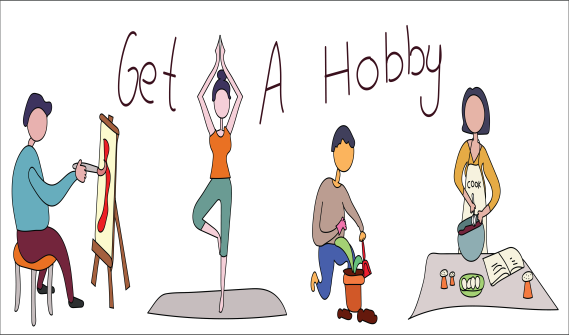

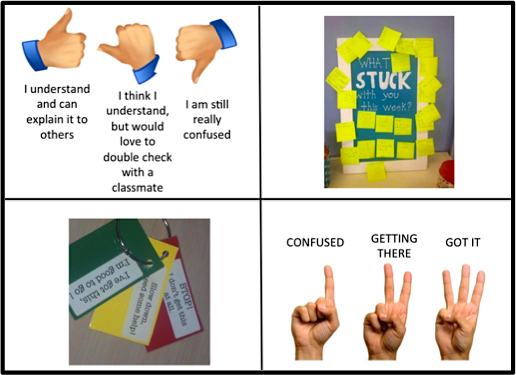
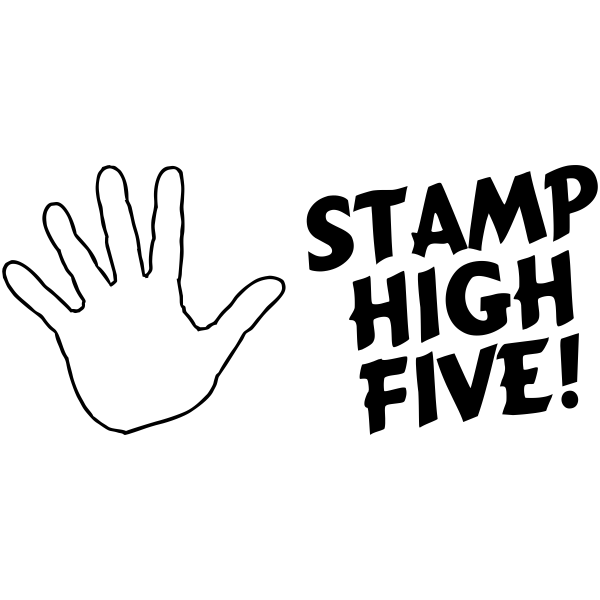 ell done! Brilliant!
Good job! I like it!
ell done! Brilliant!
Good job! I like it!




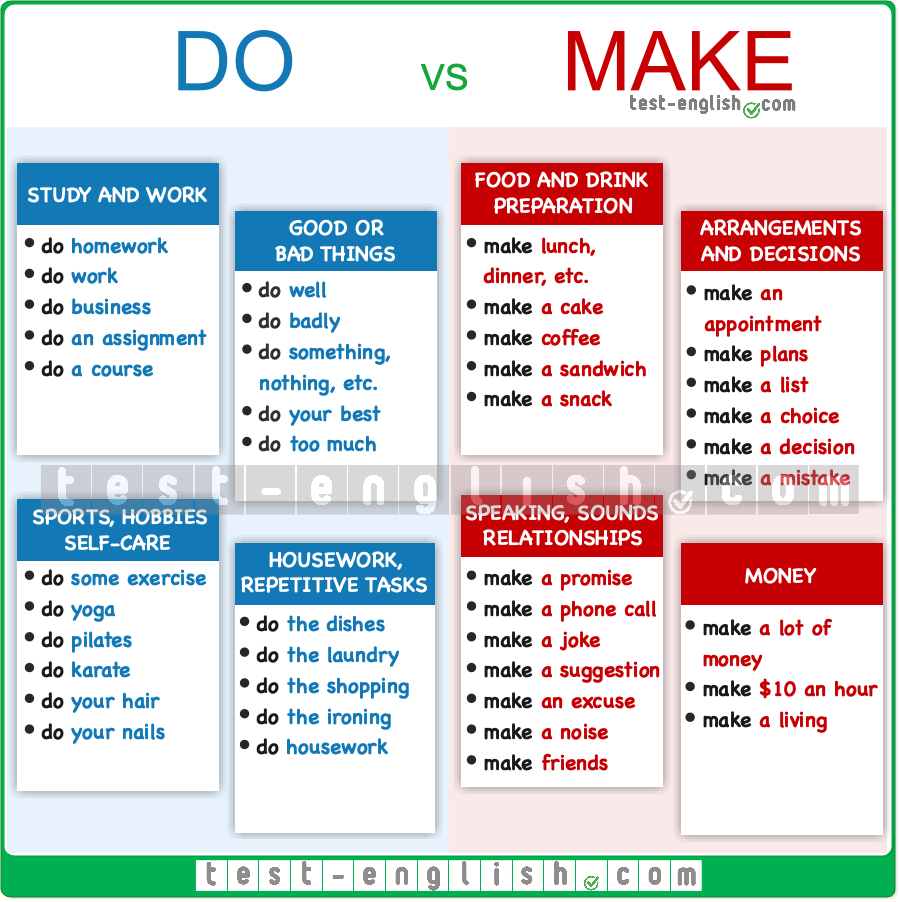
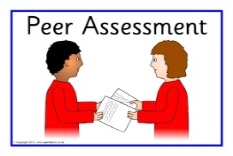

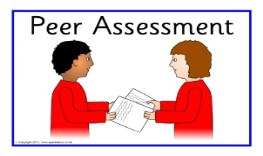
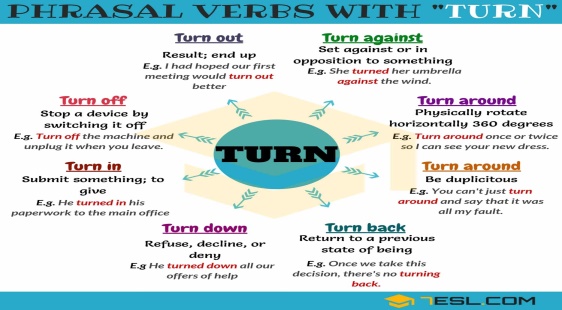
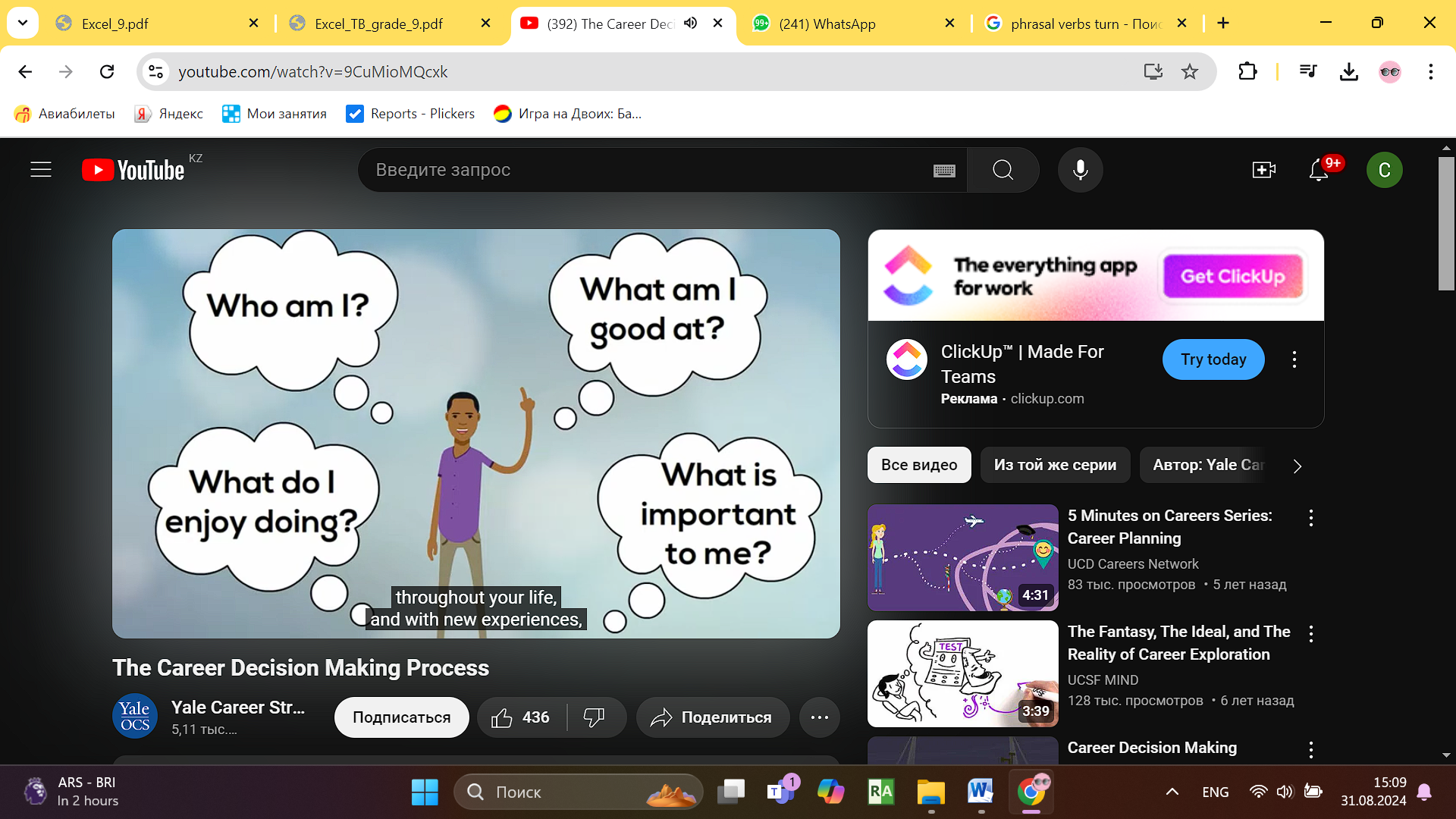
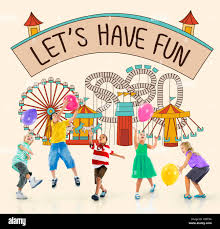
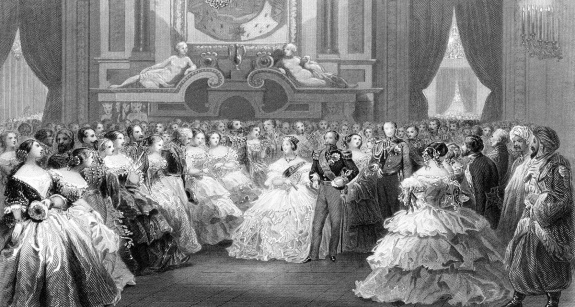


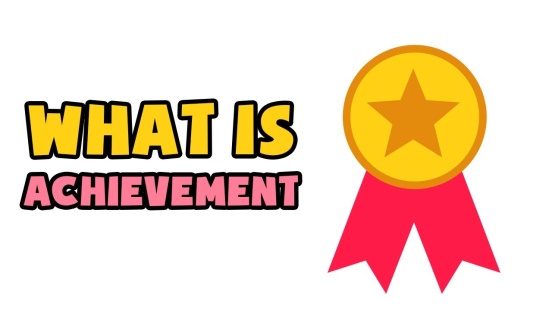
 What are the secrets of
a long life?
What are the secrets of
a long life?